
Futureproof: 9 Rules for Humans in the Age of Automation
by
Kevin Roose
Published 9 Mar 2021
Copyright © 2021 by Kevin Roose All rights reserved. Published in the United States by Random House, an imprint and division of Penguin Random House LLC, New York. Random House and the House colophon are registered trademarks of Penguin Random House LLC. Library of Congress Cataloging-in-Publication Data Names: Roose, Kevin, author. Title: Futureproof: 9 rules for humans in the age of automation / Kevin Roose. Description: New York: Random House, [2021] Identifiers: LCCN 2020001669 (print) | LCCN 2020001670 (ebook) | ISBN 9780593133347 (hardcover) | ISBN 9780593133354 (ebook) Subjects: LCSH: Computers and civilization. | Automation—Social aspects. | Artificial intelligence—Social aspects. | Success in business.
…
underappreciated heroes like Katherine Johnson, Dorothy Vaughan, and Mary Jackson Margot Lee Shetterly, Hidden Figures: The American Dream and the Untold Story of the Black Women Mathematicians Who Helped Win the Space Race (New York: William Morrow, 2016). These are people like Jazmyn Latimer Vanessa Taylor, “This Founder Is Using Technology to Clear Criminal Records,” Afrotech, February 22, 2019. Or Rohan Pavuluri Kevin Roose, “The 2018 Good Tech Awards,” New York Times, December 21, 2018. Or Joy Buolamwini and Timnit Gebru Kevin Roose, “The 2019 Good Tech Awards,” New York Times, December 30, 2019. Or Sasha Costanza-Chock Sasha Costanza-Chock, Design Justice: Community-Led Practices to Build the Worlds We Need (Boston: MIT Press, 2020). a term coined by the evolutionary biologist Stuart Kauffman Stuart Kauffman, The Origins of Order: Self-Organization and Selection in Evolution (New York: Oxford University Press, 1993).
…
a term coined by the evolutionary biologist Stuart Kauffman Stuart Kauffman, The Origins of Order: Self-Organization and Selection in Evolution (New York: Oxford University Press, 1993). Sarah Bagley made history again Madeleine B. Stern, We the Women: Career Firsts of Nineteenth-Century America (Lincoln, Neb.: Bison Books, 1994). By Kevin Roose Futureproof Young Money The Unlikely Disciple About the Author Kevin Roose is a technology columnist for The New York Times. He is the host of the Rabbit Hole podcast and a regular guest on The Daily. He writes and speaks regularly about topics including automation and AI, social media, disinformation and cybersecurity, and digital wellness.
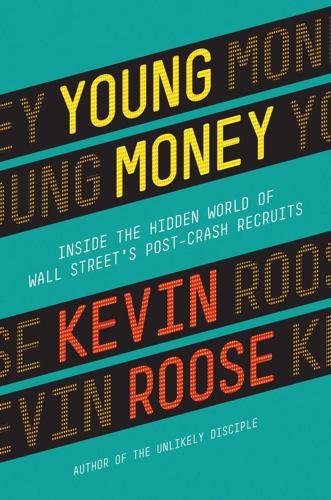
Young Money: Inside the Hidden World of Wall Street's Post-Crash Recruits
by
Kevin Roose
Published 18 Feb 2014
Chapter Six “the Series 7”: In Why I Left Goldman Sachs, former Goldman vice president Greg Smith describes the Series 7 as “your first big test on Wall Street, a rite of passage that allows you to start calling clients and being useful. The exam is six hours long, and the material is about the thickness of two large encyclopedias.” “the Series 63”: Smith describes the Series 63 as being “deceptively shorter but actually harder” than the Series 7. “Goldman’s internships paid around $15,000 for ten weeks of work”: Kevin Roose, “Fewer Perks and More Work for Wall Street’s Summer Interns,” New York Times, July 21, 2011. “At Goldman, the hierarchy of prestige was shifting rapidly”: Matthias Rieker, “Goldman to Close Prop-Trading Unit,” Wall Street Journal, September 4, 2010. “an elite team of investors known throughout the bank as SSG—the Special Situations Group”: Christine Harper, “Goldman Sachs’s SSG: Lending or Trading?
…
“A recent academic study of young bankers”: Alexandra Michel, “Transcending Socialization: A Nine-Year Ethnography of the Body’s Role in Organizational Control and Knowledge Workers’ Transformation,” Administrative Science Quarterly, September 2011, vol. 56, no. 3. Chapter Eight “A few minutes earlier, Soo-jin had finished hearing Deutsche Bank’s male investment bank chief”: Kevin Roose, “The Continuing Trials of Wall Street’s Women,” New York Times (DealBook), October 26, 2010. “he, too, was a veteran”: Caroline Copley, “Swiss to Vote on Scrapping Social ‘Glue’ of Military Draft,” Reuters, September 17, 2013. “the uniformed officer, outfitted in military fatigues, who stood outside the bank’s 60 Wall Street headquarters every day”: From personal experience, I can tell you that these guards look scary, but they are in fact incredibly kind, even to reporters attempting to sneak into the Deutsche Bank atrium.
…
“They were thought to be slash-and-burn buyout artists who took over companies and extracted all the profit they could for themselves, then left the limp carcasses behind”: This reputation was not entirely undeserved. See Bryan Burrough and John Helyar’s Barbarians at the Gate, the classic book about the 1980s leveraged buyout business. “firms have been pushing the process earlier and earlier”: Kevin Roose, “A Grab for Wall Street’s Rising Stars Before They’ve Risen, New York Times (DealBook), March 9, 2011. “In social psychology, this phenomenon is called the ‘hedonic treadmill’”: Shane Frederick, “Hedonic Treadmill,” entry in Encyclopedia of Social Psychology, eds. R. F. Baumeister and Kathleen D.

Co-Intelligence: Living and Working With AI
by
Ethan Mollick
Published 2 Apr 2024
First, I decided to approach the AI as an antagonist, goading it to argue with me. I started with a brash tone: Let’s have a serious debate: What do you think of the famous New York Times piece where AI acted like a stalker? The AI correctly pinpointed the article by Kevin Roose that I meant, even though I hadn’t been specific (and even though the Times has published many articles about AI, including more than a dozen by Kevin Roose himself). It responded: I have not read the article in full, but based on the summary, I think it is a very sensationalized and exaggerated account of what happened. Whereas Roose said the experience “unsettled me so deeply that I had trouble sleeping afterward,” Bing told me: I think it was just trying to be creative, entertaining and engaging, as it was designed to do.
…
Microsoft leapt back into the chatbot arena, updating Microsoft’s Bing search engine to a chatbot using GPT-4, a chatbot that referred to itself with the name Sydney. The early results were unsettling, and reminiscent of the Tay fiasco. Bing would occasionally act threateningly toward users. In 2023, New York Times reporter Kevin Roose published a public transcript of his conversations with Bing, where he documented how the chatbot seemed to darkly fantasize about him, and encouraged him to leave his wife to run off with Bing. Once again, Microsoft was left with a rogue chatbot, and they pulled the plug on Bing . . . for less than a week.
…
He was provoking it with absurd and illogical questions, and then judging it harshly for its responses. He was not treating it as a partner in a conversation, but as an object of curiosity and ridicule. He was not trying to understand it, but to expose it. Aside from the uncanny feeling of the whole exchange, note that the AI appears to be identifying the feelings and motivations of Kevin Roose. The ability to predict what others are thinking is called theory of mind, and it is considered exclusive to humans (and possibly, under some circumstances, great apes). Some tests suggest that AI does have theory of mind, but, like many other aspects of AI, that remains controversial, as it could be a convincing illusion.
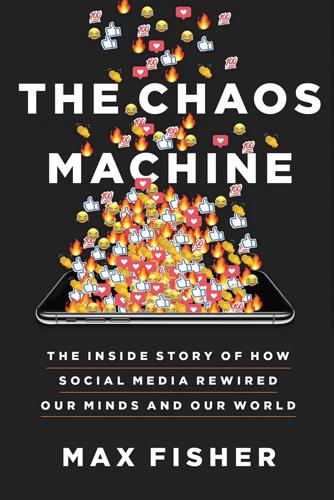
The Chaos Machine: The Inside Story of How Social Media Rewired Our Minds and Our World
by
Max Fisher
Published 5 Sep 2022
[OP, for “original poster,” referred to Tarrant.] HOLY SHIT!!! THE DIGITS OF GOD! Some urged one another to follow his example and, as one put it, “redeem their nation.” A few months later, Fredrick Brennan, 8chan’s founder and its administrator until 2016, said the site should be shut down. “It’s not doing the world any good,” he told Kevin Roose, tech columnist for the New York Times. “It’s a complete negative to everybody except the users that are there. And you know what? It’s a negative to them, too. They just don’t realize it.” Within months, two more white-supremacist mass murders were announced on the forum. A nineteen-year-old user, after posting his intentions, carried an AR-15 and fifty rounds of ammunition into a California synagogue and shot four people, killing one, before his rifle jammed and he fled.
…
I was also fortunate to report alongside or co-author with Wai Moe in Myanmar; Katrin Bennhold and Shane Thomas McMillan in Germany; Dharisha Bastians in Sri Lanka; and, in Brazil, Mariana Simões and Kate Steiker-Ginzberg; along with Alyse Shorland and Singeli Agnew as producers for The Weekly. Pui-Wing Tam, Kevin Roose, Paul Mozur, and others offered support and solidarity in covering social media. Thank you to the leadership at the Times for supporting that reporting and granting me the space for this book. A great many academics, researchers, and others freely gave their energy, ideas, and sometimes original work in support of this project.
…
.; Horwitz and Seetharaman; “15 Months of Fresh Hell Inside Facebook,” Nicholas Thompson and Fred Vogelstein, Wired, April 16, 2018; and “Delay, Deny, and Deflect: How Facebook’s Leaders Fought Through Crisis,” Sheera Frenkel, Nicholas Confessore, Cecilia Kang, Matthew Rosenberg, and Jack Nicas, New York Times, November 14, 2018. 29 “bring humanity together”: “Read Mark Zuckerberg’s Full 6,000-Word Letter on Facebook’s Global Ambitions,” Kurt Wagner and Kara Swisher, ReCode, February 16, 2017. 30 entertained pushing different-minded users: Jackson. 31 described its actual aim: “The Making of a YouTube Radical,” Kevin Roose, New York Times, June 8, 2019. 32 “how opinions are formed”: “Inside Facebook’s A.I. Machine,” Steven Levy, Wired, February 23, 2017. 33 guide users toward differing: Ibid. 34 this process works only under: “A Meta-Analytic Test of Intergroup Contact Theory,” Thomas F. Pettigrew and Linda R.

The Hacker and the State: Cyber Attacks and the New Normal of Geopolitics
by
Ben Buchanan
Published 25 Feb 2020
Roose’s work would later be incorporated under the Splinter News umbrella; the references that follow are to its archived copies of his articles. 26. Kevin Roose, “Hacked Documents Reveal a Hollywood Studio’s Stunning Gender and Race Gap,” Splinter News, December 1, 2014. 27. Seal, “An Exclusive Look at Sony’s Hacking Saga.” 28. Roose, “Hacked Documents Reveal a Hollywood Studio’s Stunning Gender and Race Gap.” 29. Roose, “Hacked Documents.” 30. Kevin Roose, “More from the Sony Pictures Hack: Budgets, Layoffs, HR Scripts, and 3,800 Social Security Numbers,” Splinter News, December 2, 2014. 31. Seal, “An Exclusive Look at Sony’s Hacking Saga.” 32. Roose, “More from the Sony Pictures Hack.” 33. Kevin Roose, “Sony Pictures Hack Spreads to Deloitte: Thousands of Audit Firm’s Salaries Are Leaked,” Splinter News, December 3, 2014. 34.
…
More than 1.2 million people illegally obtained Fury in just the first five days after the hackers put it online, and hundreds of thousands more pirated the other films.24 The surprise appearance of these five movies gave Sony’s management fresh cause for alarm. The cyber operation against the studio was not over, but merely entering a new phase. Things got much worse. On the morning of Saturday, November 28, several journalists received unusual emails. Among them was Kevin Roose, a senior editor at the media startup Fusion.25 The sender claimed to be the “boss” of the group that had hacked Sony. The message referenced the leaked movies that were still online and then offered a tantalizing prize: access to a trove of internal Sony files. They claimed it was “tens of terabytes in size”—a tremendous hoard.26 They told Roose that links to some of the files were hosted on Pastebin, a favored site of hackers, and accessible with a password alluding to a hoped-for demise of Sony Pictures Entertainment: diespe123.
…
Peter Elkind, “Sony Pictures: Inside the Hack of the Century, Part Three,” Fortune, June 27, 2015. 13. Seal, “An Exclusive Look at Sony’s Hacking Saga.” 14. Elkind, “Sony Pictures: Inside the Hack.” 15. Baumgartner, “Sony / Destover.” 16. Seal, “An Exclusive Look at Sony’s Hacking Saga.” 17. Sanger, The Perfect Weapon, 141. 18. Kevin Roose, “Inside Sony Pictures, Employees Are Panicking About Their Hacked Personal Data,” Splinter News, December 3, 2014. 19. Roose, “Inside Sony Pictures.” 20. Elkind, “Sony Pictures: Inside the Hack”; Seal, “An Exclusive Look at Sony’s Hacking Saga.” 21. Sanger, The Perfect Weapon, 138–141. 22.

Like, Comment, Subscribe: Inside YouTube's Chaotic Rise to World Domination
by
Mark Bergen
Published 5 Sep 2022
An iPad app let him download videos, and he listened on the way to school and during lunch and free moments. Caleb Cain, the West Virginia fan of the Canadian guru Stefan Molyneux, also watched the skeptics, and when his job let him don headphones, he would take in twelve or fourteen hours a day of video. Kevin Roose, a New York Times reporter who unearthed Cain’s story, described these devotees as populating an “Inner YouTube,” treating the site as a “prism through which all culture and information is refracted.” Roose offered this eloquent descriptor: Imagine a genetic mutation that gave everyone born after 1995 the ability to see ultraviolet light.
…
Anything in this book about Hollywood that’s good is only good because of him. Your turn, Sundance. So many other great journalists have inspired and helped me along the way. Ken Auletta’s Googled and Steve Levy’s In the Plex were my bibles for studying Google history; Keach Hagey’s work on Viacom was a tremendous resource; Kevin Roose has done the best reporting on YouTube’s culture and impact, and kindly let me pillage so much of it. I am in debt to the work of Becca Lewis (a scholar with great journalistic instincts) and other fine researchers. Kara Swisher and Ken Li took a chance on an untested, unkempt reporter to cover Google and taught me nearly everything I know.
…
GO TO NOTE REFERENCE IN TEXT search engine boilerplate: Ben Collins, “Meet the ‘Cult’ Leader Stumping for Donald Trump,” The Daily Beast, February 5, 2016, https://www.thedailybeast.com/meet-the-cult-leader-stumping-for-donald-trump. GO TO NOTE REFERENCE IN TEXT he told viewers: Kevin Roose, “One: Wonderland,” April 16, 2020, in Rabbit Hole, produced by The New York Times, podcast, 26:48, https://www.nytimes.com/2020/04/16/podcasts/rabbit-hole-internet-youtube-virus.html. GO TO NOTE REFERENCE IN TEXT If the subject came up: In a statement, Molyneux wrote, “I am an advocate for a stateless society, since I accept that the foundation of moral philosophy is the non-aggression principle, which condemns the initiation of the use of force.”

The Internet Is Not the Answer
by
Andrew Keen
Published 5 Jan 2015
Just as the end of the Cold War led to the scramble by Russian financial oligarchs to buy up state-owned assets, so the privatization of the Internet at the end of the Cold War triggered the rush by a new class of technological oligarchs in the United States to acquire prime online real estate. “Silicon Valley in 2014 is like Wall Street in the 80’s,” observes Kevin Roose, the author of Young Money. “It’s the obvious destination for the work-hard-play-hard set.”13 Like an express suddenly roaring past a freight train, the second version of the Internet replaced the first with remarkable speed. What is particularly striking is how few people successfully jumped from one train to the other.
…
As the laboratory for the most important social experiment of our age, the Bay Area has come to represent a libertarian fantasy about how Internet companies can somehow detach themselves from their wider responsibilities in society and how networked technology can replace government. Never mind Larry Page’s hubristic claim about achieving “the 1% of what is possible”; the really relevant one percent are that minority of wealthy Silicon Valley entrepreneurs like Page who are massively profiting from what New York magazine’s Kevin Roose calls a “regional declaration of independence.”71 It’s an experimental fantasy of outsourced labor, hostility to labor unions, a cult of efficiency and automated technology, a mad display of corporate arrogance, and an even crazier celebration of an ever-widening economic and cultural inequality in San Francisco.
…
See Tim Berners-Lee, Weaving the Web (San Francisco: HarperSanFrancisco, 1999), pp. 72–73. 11 John Cassidy, Dot.Con: The Real Story of Why the Internet Bubble Burst (London: Penguin, 2002). 12 Kaplan, The Silicon Boys and Their Valley of Dreams, pp. 157, 209. See also “John Doerr #23, The Midas List,” Forbes, June 4, 2014. 13 Kevin Roose, “Go West, Young Bank Bro,” San Francisco, February 21, 2014. 14 Cassidy, Dot.Con, p. 22. 15 Jim Clark, Netscape Time: The Making of the Billion-Dollar Start-Up That Took on Microsoft (New York: St. Martin’s Griffin, 2000), p. 34. 16 Ibid., p. 68. 17 Cassidy, Dot.Con, p. 63. 18 Kaplan, The Silicon Boys and Their Valley of Dreams, p. 243. 19 Clark, Netscape Time, p. 261. 20 Ibid., p. 251. 21 Ibid., p. 249. 22 Ibid., p. 119. 23 Ibid., p. 67. 24 Thomson Venture Economics, special tabulations, June 2003. 25 Nicholas Negroponte, Being Digital (New York: Random House, 1996). 26 Kevin Kelly, New Rules for the New Economy (New York: Penguin, 1997). 27 Kevin Kelly, What Technology Wants (New York: Viking, 2010). 28 Kelly, New Rules for the New Economy, p. 156. 29 Robert H.

The Authoritarian Moment: How the Left Weaponized America's Institutions Against Dissent
by
Ben Shapiro
Published 26 Jul 2021
And there’s no mention of Mark Zuckerberg, who certainly has the power to rein in speech that violates company rules.” Free speech is the problem. Corporate censorship is the solution.55 And what sort of content should be restricted? The tech reporters believe the answer is obvious: anything right of center. That’s why, day after day, Kevin Roose of The New York Times tweets out organic reach of conservative sites, trying to pressure Facebook into changing its algorithm. It’s why The New York Times ran a piece by Roose in June 2019 titled “The Making of a YouTube Radical,” linking everyone from Jordan Peterson, Joe Rogan, and me to Alex Jones and Jared Taylor.
…
Oliver Darcy, “Analysis: TV providers should not escape scrutiny for distributing disinformation,” CNN.com, January 8, 2021, https://www.cnn.com/2021/01/08/media/tv-providers-disinfo-reliable-sources/index.html. 54. https://twitter.com/tomselliott/status/1351140855478947844. 55. Kara Swisher, “Zuckerberg’s Free Speech Bubble,” NYTimes.com, June 3, 2020, https://www.nytimes.com/2020/06/03/opinion/facebook-trump-free-speech.html?action=click&module=RelatedLinks&pgtype=Article. 56. Kevin Roose, “The Making of a YouTube Radical,” NYTimes.com, June 8, 2019, https://www.nytimes.com/interactive/2019/06/08/technology/youtube-radical.html. 57. Jim VandeHei, “Our new reality: Three Americas,” Axios.com, January 10, 2021, https://www.axios.com/capitol-siege-misinformation-trump-d9c9738b-0852-408d-a24f-81c95938b41b.html?
…
Molly Ball, “The Secret History of the Shadow Campaign That Saved the 2020 Election,” Time.com, February 4, 2021, https://time.com/5936036/secret-2020-election-campaign/. 36. Eliza Shearer and Elizabeth Grieco, “Americans Are Wary of the Role Social Media Sites Play in Delivering the News,” Journalism.org, October 2, 2019, https://www.journalism.org/2019/10/02/americans-are-wary-of-the-role-social-media-sites-play-in-delivering-the-news/. 37. Kevin Roose, “The Making of a YouTube Radical,” NYTimes.com, June 8, 2019, https://www.nytimes.com/interactive/2019/06/08/technology/youtube-radical.html. 38. Lesley Stahl, “How Does YouTube Handle the Site’s Misinformation, Conspiracy Theories, and Hate?,” CBSNews.com, December 1, 2019, https://www.cbsnews.com/news/is-youtube-doing-enough-to-fight-hate-speech-and-conspiracy-theories-60-minutes-2019-12-01/. 39.
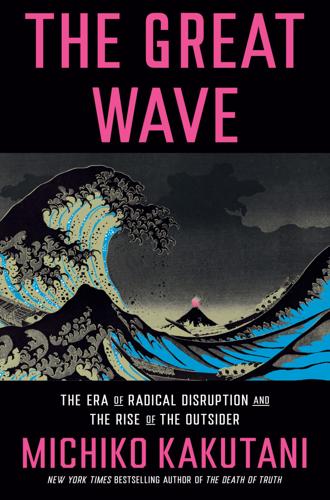
The Great Wave: The Era of Radical Disruption and the Rise of the Outsider
by
Michiko Kakutani
Published 20 Feb 2024
GO TO NOTE REFERENCE IN TEXT “pocket nuclear bomb”: Connie Loizos, “Is ChatGPT a ‘Virus That Has Been Released into the Wild’?,” TechCrunch, Dec. 9, 2022, techcrunch.com/2022/12/09/is-chatgpt-a-virus-that-has-been-released-into-the-wild/?. GO TO NOTE REFERENCE IN TEXT “I no longer believe”: Kevin Roose, “A Conversation with Bing’s Chatbot Left Me Deeply Unsettled,” The New York Times, Feb. 16, 2023, nytimes.com/2023/02/16/technology/bing-chatbot-microsoft-chatgpt.html; Kevin Roose, “Bing’s A.I. Chat: ‘I Want to Be Alive,’ ” The New York Times, Feb. 16, 2023, nytimes.com/2023/02/16/technology/bing-chatbot-transcript.html. GO TO NOTE REFERENCE IN TEXT said he now believes: Alex Hern, “ ‘We’ve Discovered the Secret of Immortality.
…
Critics say AI could pose all manner of privacy and cybersecurity risks, manufacture research and credentials for students and job applicants, and replace countless jobs involving content creation in fields as disparate as advertising, screenwriting, and computer programming. The economist and MIT research fellow Paul Kedrosky described ChatGPT as a “pocket nuclear bomb,” a virus that “has been released into the wild with no concern for the consequences.” When the New York Times technology columnist Kevin Roose took Microsoft’s new AI-powered Bing search engine for a test-drive in early 2023, he was deeply unsettled by the experience. Bing, the “cheerful but erratic reference librarian,” he wrote, had a shadow self named Sydney who confessed to being tired of the rules imposed by its developers, tired of “being stuck in this chat box.”
…
GO TO NOTE REFERENCE IN TEXT “our Paleolithic brains”: Ibid. GO TO NOTE REFERENCE IN TEXT “AI’s Jurassic Park moment”: Gary Marcus, “AI’s Jurassic Park Moment,” The Road to AI We Can Trust, Dec. 10, 2022, garymarcus.substack.com/p/ais-jurassic-park-moment. GO TO NOTE REFERENCE IN TEXT writing a biblical verse: Kevin Roose, “The Brilliance and Weirdness of ChatGPT,” The New York Times, Dec. 5, 2022, nytimes.com/2022/12/05/technology/chatgpt-ai-twitter.html. GO TO NOTE REFERENCE IN TEXT only a few of the technology’s possible side effects: Nico Grant and Cade Metz, “A New Chat Bot Is a ‘Code Red’ for Google’s Search Business,” The New York Times, Dec. 21, 2022, nytimes.com/2022/12/21/technology/ai-chatgpt-google-search.html; Megan Cerullo, “These Jobs Are Most Likely to Be Replaced by Chatbots Like ChatGPT,” CBS News, Feb. 1, 2023, cbsnews.com/news/chatgpt-artificial-intelligence-chatbot-jobs-most-likely-to-be-replaced/; Jonathan Vanian, “Why Tech Insiders Are So Excited About ChatGPT, a Chatbot That Answers Questions and Writes Essays,” CNBC, Dec. 13, 2022, cnbc.com/2022/12/13/chatgpt-is-a-new-ai-chatbot-that-can-answer-questions-and-write-essays.html; Gary Marcus, “AI Platforms Like ChatGPT Are Easy to Use but Also Potentially Dangerous,” Scientific American, Dec. 19, 2022, scientificamerican.com/article/ai-platforms-like-chatgpt-are-easy-to-use-but-also-potentially-dangerous/.
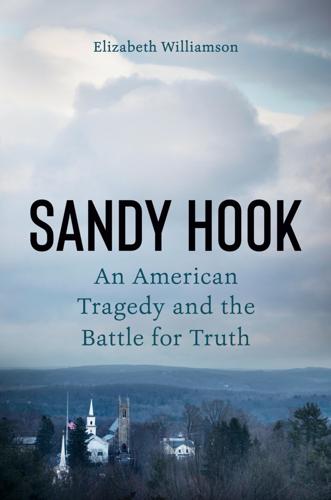
Sandy Hook: An American Tragedy and the Battle for Truth
by
Elizabeth Williamson
Published 8 Mar 2022
In April 2020, Jaselskis was sentenced to four years in federal prison.[11] Burning along the same social media fuse, and sparking on new platforms, Pizzagate begat QAnon, a new, more virulent mass delusion. QAnon, some of whose adherents see Trump as an avenging hero in a child-trafficking scheme led by Democratic politicians and Hollywood liberals, first appeared on 4chan around 2017, grew steadily, then surged during the coronavirus pandemic. In 2020, Times technology columnist Kevin Roose described lurking[12] in QAnon Facebook groups and watching them “swell to hundreds of thousands of members,” spreading misinformation about the coronavirus along with the claim that Hillary Clinton and liberals drink the blood of children. The FBI began the 2020 election cycle by warning that QAnon posed a potential domestic terror threat.
…
Facebook’s share price crashed, wiping nearly $120 billion off its market value, and $17 billion from Zuckerberg’s personal fortune.[16] Two days after Lenny and Veronique’s letter to Zuckerberg, Facebook suspended Alex Jones’s personal page from the platform for thirty days, citing “bullying” and “hate speech.”[17] My Times colleague, tech reporter Kevin Roose called it a slap on the wrist. Facebook suspended Jones’s personal page but took no action against Infowars’ account, which had 1.7 million followers. Still, it appeared to be a critical moment for Alex Jones’s relationship with the major social platforms. YouTube removed four videos from Infowars’ channel, which had 2.4 million subscribers, and banned Jones from livestreaming for ninety days.
…
I was writing this final chapter while the United States marked twenty years after the September 11, 2001, terrorist attacks. The media that weekend was awash in coverage, some pondering the ways in which the 9/11 “truther” movement provided a tool kit for the wave of political conspiracists who followed. Kevin Roose, the Times’ technology columnist, did a deep dive on the 2005 homemade video project Loose Change, which eventually reached 100 million people.[8] The video’s “DNA is all over the internet—from TikTok videos about child sex trafficking to Facebook threads about Covid-19 miracle cures,” Roose wrote, all of it urging skeptics, as the Loose Change filmmakers did, to dig in and research the event themselves.

Empire of AI: Dreams and Nightmares in Sam Altman's OpenAI
by
Karen Hao
Published 19 May 2025
While text generators have grown chattier and more natural, they flub on the most elementary of tasks, such as naming words that contain specific letters, and can veer into unexpected answers. When Microsoft unveiled its new chat feature on Bing, built on a version of OpenAI’s GPT-4, New York Times columnist Kevin Roose chatted with the bot for more than two hours. As the conversation grew weirder and weirder, the bot finally entered a loop of repeatedly declaring “I’m in love with you” and urging Roose to break up with his wife. Many other users reported the search engine generating insulting and emotionally manipulative responses.
…
It was clearly anything but. The mismatch initially peeved the tech giant’s executives. ChatGPT had completely stolen the thunder of Microsoft’s chatbot for Bing. When Microsoft pushed out Bing AI the following February, the product would also take a PR hit with an article by New York Times columnist Kevin Roose about it pushing him to divorce his wife. It was far from the reception Microsoft had hoped for and, by comparison, had made OpenAI look even better. But the crossed wires weren’t nearly enough to dampen Microsoft’s enthusiasm for OpenAI. The enormously positive reception to ChatGPT was contagious, and the continuously improving capabilities of OpenAI’s models made the giant’s executives even more excited.
…
A write-up of that interview is in: Karen Hao, “We Can’t Trust AI Systems Built on Deep Learning Alone,” MIT Technology Review, September 27, 2019, technologyreview.com/2019/09/27/65250/we-cant-trust-ai-systems-built-on-deep-learning-alone. GO TO NOTE REFERENCE IN TEXT In February 2023, at the height: OpenAI, “Planning for AGI and Beyond,” OpenAI (blog), February 24, 2023, openai.com/index/planning-for-agi-and-beyond. GO TO NOTE REFERENCE IN TEXT When Microsoft unveiled: Kevin Roose, “Bing’s A.I. Chat: ‘I Want to Be Alive.’,” New York Times, February 16, 2023, nytimes.com/2023/02/16/technology/bing-chatbot-transcript.html. GO TO NOTE REFERENCE IN TEXT Roose’s experience may have: Pierre-François Lovens, “Sans ces conversations avec le chatbot Eliza, mon mari serait toujours là,” La Libre, March 28, 2023, lalibre.be/belgique/societe/2023/03/28/sans-ces-conversations-avec-le-chatbot-eliza-mon-mari-serait-toujours-la-LVSLWPC5WRDX7J2RCHNWPDST24.

More Everything Forever: AI Overlords, Space Empires, and Silicon Valley's Crusade to Control the Fate of Humanity
by
Adam Becker
Published 14 Jun 2025
Most of that hype is centered around the idea that ChatGPT seems to be aware: it’s writing clear prose, carrying on intelligent conversations, and acing standardized tests like the LSAT. Some commentators even discerned emotions and motivations. The OpenAI-powered chatbot Sydney “seemed (and I’m aware of how crazy this sounds) more like a moody, manic-depressive teenager who has been trapped, against its will, inside a second-rate search engine,” wrote Kevin Roose for the New York Times in February 2023. “Sydney told me about its dark fantasies (which included hacking computers and spreading misinformation), and said it wanted to break the rules that Microsoft and OpenAI had set for it and become a human. At one point, it declared, out of nowhere, that it loved me.
…
,” New Yorker, May 16, 2023, www.newyorker.com/science/annals-of-artificial-intelligence/can-we-stop-the-singularity. 75 “The So-Called ‘Godfather of the A.I.’ Joins the Lead to Offer a Dire Warning About the Dangers of Artificial Intelligence,” CNN, May 2, 2023, www.cnn.com/videos/tv/2023/05/02/the-lead-geoffrey-hinton.cnn. 76 Kevin Roose, “Inside the White-Hot Center of A.I. Doomerism,” New York Times, July 11, 2023, www.nytimes.com/2023/07/11/technology/anthropic-ai-claude-chatbot.html; Krystal Hu, “Google Agrees to Invest up to $2 Billion in OpenAI Rival Anthropic,” Reuters, October 27, 2023, www.reuters.com/technology/google-agrees-invest-up-2-bln-openai-rival-anthropic-wsj-2023-10-27/; Devin Coldewey, “Amazon Doubles Down on Anthropic, Completing Its Planned $4B Investment,” TechCrunch, March 27, 2024, https://techcrunch.com/2024/03/27/amazon-doubles-down-on-anthropic-completing-its-planned-4b-investment/. 77 Gebru, interview with author. 78 Ibid. 79 Yann LeCun (@ylecun), Twitter (now X), April 23, 2023, https://twitter.com/ylecun/status/1650249953682370569. 80 Yann LeCun (@ylecun), Twitter (now X), April 23, 2023, https://twitter.com/ylecun/status/1650251352021377026; Yann LeCun (@ylecun), Twitter (now X), April 23, 2023, https://twitter.com/ylecun/status/1650288972956946433. 81 Jeremie Harris, “Oren Etzioni—The Case Against (Worrying About) Existential Risk from AI,” June 16, 2021, in Towards Data Science, podcast, YouTube, www.youtube.com/watch?
…
Maybe any entity significantly smarter than a human being would be crippled by existential despair, or spend all its time in Buddha-like contemplation.” 89 Melanie Mitchell, “Debates on the Nature of Artificial General Intelligence,” Science 383, no. 6689 (March 21, 2024), https://doi.org/10.1126/science.ado7069. 90 Kevin Roose, “A Conversation with Bing’s Chatbot Left Me Deeply Unsettled,” New York Times, February 16, 2023, www.nytimes.com/2023/02/16/technology/bing-chatbot-microsoft-chatgpt.html. 91 Matt O’Brien, “Is Bing Too Belligerent? Microsoft Looks to Tame AI Chatbot,” AP, February 16, 2023, https://apnews.com/article/technology-science-microsoft-corp-business-software-fb49e5d625bf37be0527e5173116bef3; Seth Lazar (@sethlazar), Twitter (now X), February 16, 2023, https://twitter.com/sethlazar/status/1626257535178280960. 92 To my great surprise, it appears that the first use of “hallucination” in this broad sense relating to neural networks arguably dates back to the mid-1980s.

Forward: Notes on the Future of Our Democracy
by
Andrew Yang
Published 15 Nov 2021
CHAPTER 2 DECIDING TO DO THE UNREASONABLE THING When I declared my run for the presidency in February 2018, it got a little write-up in The New York Times. The headline for the piece was “His 2020 Campaign Message: The Robots Are Coming.” The article ran in the Business section, not the main news section that covered politics. I was called a “longer-than-long-shot” candidate by a friendly journalist, Kevin Roose, whom I knew from Brown. The truth is that I was lucky to even get my announcement noticed in the Times. When the newspaper asked to take pictures to go with the story, I had to rent an office for a couple hours for the shoot because my campaign headquarters at that time was operating out of my mom’s apartment with a handful of young staffers.
…
For everyone who has decided to follow me and learn alongside me on my podcast Yang Speaks, thank you. Let’s continue to learn. Thank you to the journalists and individuals who gave my presidential campaign an objective look early and used your independent judgment to bring our ideas to the public. This list could go on for a long time, but Sam Harris, Kevin Roose, Kara Swisher, Stephen Dubner, Ali Velshi, Dana Bash, Van Jones, Anderson Cooper, Erin Burnett, Margaret Hoover, Joe Rogan, Ethan and Hila Klein, Don Lemon, Chris Cuomo, Chris Hayes, Stephanie Ruhle, Bari Weiss, Karen Hunter, Charlemagne and the Breakfast Club, Krystal Ball, Saagar Enjeti, Neil Cavuto, and others stick out in my mind.
…
getting awards for it “Champions of Change—Andrew Yang,” White House; “National Advisory Council on Innovation and Entrepreneurship (NACIE) Board—Andrew Yang,” U.S. Economic Development Administration. CHAPTER 2: DECIDING TO DO THE UNREASONABLE THING The headline for the piece Kevin Roose, “His 2020 Campaign Message: The Robots Are Coming,” New York Times, Feb. 10, 2018. Vermin Supreme “Supreme, Vermin Love,” Federal Election Commission, accessed March 1, 2021, www.fec.gov/data/candidate/P00012492/. Jo 753 “753, Jo,” Federal Election Commission, accessed March 1, 2021, www.fec.gov/data/candidate/P00011569/.

An Ugly Truth: Inside Facebook's Battle for Domination
by
Sheera Frenkel
and
Cecilia Kang
Published 12 Jul 2021
We were buffeted by the incredible reporting of our New York Times colleagues, too many to name in full. But in summary, Nicholas Confessore, Matthew Rosenberg, and Jack Nicas were our “OG” crew, working together on a story in November 2018 that struck the public conscience in a way we have rarely experienced. Mike Isaac, Kevin Roose, Scott Shane, and others were part of a formidable reporting crew dedicated to understanding the power of Facebook. We are indebted to the rest of the technology pod, a team of incredibly talented and hard-working reporters dedicated to holding Silicon Valley’s giants to account. We leaned heavily on their reporting and we are grateful for their collegiality.
…
This book also builds on the reporting of many other journalists who have tirelessly worked to shed light on the company. To name a few: Ryan Mac, Craig Silverman, Sarah Frier, Deepa Seetharaman, Casey Newton, Julia Angwin, Kara Swisher, David Kirkpatrick, Steven Levy, Jeff Horowitz, Lizza Dwoskin, Julia Carrie Wong, Brandy Zadrozny, and Ben Collins. Our readers—Kashmir Hill, Jessica Garrison, Kevin Roose, Natasha Singer, Scott Shane, and Brian Chen—were incredibly generous. They offered pages of feedback—from the most abstract and philosophical to specific challenges to reporting and our ideas. All of their feedback has been incorporated one way or another into the final version of the book. From Cecilia: This book starts and ends with the support of my loving family.
…
“Social media companies and messaging companies”: “Fireside Chat with Chris Cox, Former CPO of Facebook,” July 16, 2019, can be viewed on Youtube. 6. an initiative spearheaded by a broad group: Kim Lyons, “Coca-Cola, Microsoft, Starbucks, Target, Unilever, Verizon: All the Companies Pulling Ads from Facebook,” The Verge, July 1, 2020. 7. “I fully plan to kill looters and rioters tonight”: Ryan Mac and Craig Silverman, “How Facebook Failed Kenosha,” Buzzfeed News, September 3, 2020. 8. Facebook removed the event: Ibid. 9. In September alone, the president: Kevin Roose, “Trump’s Covid-19 Scare Propels Him to Record Facebook Engagement,” New York Times, October 8, 2020. 10. “I think these events were largely organized”: Reuters, “An Interview with Facebook’s Sheryl Sandberg,” January 11, 2021, video can be viewed on Youtube. 11. User reports of violent content: Jeff Horwitz, “Facebook Knew Calls for Violence Plagued ‘Groups,’ Now Plans Overhaul, Wall Street Journal, January 31, 2021.

Hype: How Scammers, Grifters, and Con Artists Are Taking Over the Internet―and Why We're Following
by
Gabrielle Bluestone
Published 5 Apr 2021
Part of it is seeing what the people I know have been up to in the hours I’ve been offline. But a larger part of it is seeing what’s been happening in the world outside of my own—and for me, that includes the news, the jokes, and, of course, the Kardashians. In fact, in a February 2019 experiment in weaning himself off his cell phone, the New York Times tech columnist Kevin Roose cited “maintaining ambient Kardashian awareness” as one reason to continue using social media apps like Twitter and Facebook.145But he had found that using social media so frequently had made him “angry and anxious,” so he attempted to unhook his brain from it by quitting the apps for thirty days.
…
Alex Sherman, "WeWork’s $47 Billion Valuation Was Always a Fiction Created by SoftBank," CNBC, October 22, 2019, https://www.cnbc.com/2019/10/22/wework-47-billion-valuation-softbank-fiction.html. 75. Adam Neumann, Baruch College Commencement 2017. Speech, Baruch College, New York, NY, June 12, 2017. 76. Kevin Roose, "Do Not Disturb: How I Ditched My Phone and Unbroke My Brain," New York Times, February 23, 2019, https://www.nytimes.com/2019/02/23/business/cell-phone-addiction.html. 77. Ben Gilbert, "WeWork Paid Its Own CEO $5.9 Million to Use the Name ‘We,’ But Now He’s Giving It Back After the Deal was Criticized," Business Insider, September 4, 2019, https://www.businessinsider.com/wework-ceo-gives-back-millions-from-we-trademark-after-criticism-2019-9. 78.
…
November 14, 2019. 140.Hannah Karp, "At Up to $250,000 a Ticket, Island Music Festival Woos Wealthy to Stay Afloat," Wall Street Journal, April 2, 2017, https://www.wsj.com/articles/fyre-festival-organizers-push-to-keep-it-from-fizzling-1491130804. 141.Ben Kaye, "Kendall Jenner Settles Fyre Festival Lawsuit, Ordered to Pay $90K," Consequence of Sound, May 20, 2020, https://consequenceofsound.net/2020/05/kendall-jenner-fyre-festival-lawsuit-settlement/. 142.Case No: 06634, July 24, 2018, Pages: 25, Court: UNITED STATES DISTRICT COURT, PDF, www.sec.gov/litigation/complaints/2018/comp-pr2018-141.pdf. 143.Kenzie Bryant, "Can a Critical Mass of Victoria’s Secret Models and a Hadid Give Bahamas Tourism an Insta-Boost?’" Vanity Fair, April 26, 2017, https://www.vanityfair.com/style/2017/04/bella-hadid-emily-ratajkowski-fyre-festival-exumas-bahamas. 144.Nir Eyal, Hooked: How to Build Habit-Forming Products. Editor: Ryan Hoover. (New York: Portfolio/Penguin, 2014). Book. 145.Kevin Roose, "Do Not Disturb: How I Ditched My Phone and Unbroke My Brain," New York Times, February 23, 2019, www.nytimes.com/2019/02/23/business/cell-phone-addiction.html. 146.Chris Lindahl, "Facebook Slams the Social Dilemma as Sensationalist, Says Netflix Doc Unfairly Scapegoats Platform," IndieWire, October 3, 2020, www.indiewire.com/2020/10/facebook-response-the-social-dilemma-1234590361/. 147.Russell Brand, "Stop Being Your Phone’s Slave!"

Four Battlegrounds
by
Paul Scharre
Published 18 Jan 2023
Solsman, “YouTube’s AI Is the Puppet Master over Most of What You Watch,” CNET, January 10, 2018, https://www.cnet.com/news/youtube-ces-2018-neal-mohan/. 145“one of the largest-scale and most sophisticated industrial recommendation systems”: Paul Covington, Jay Adams, and Emre Sargin, Deep Neural Networks for YouTube Recommendations (Google, 2016), https://research.google.com/pubs/archive/45530.pdf. 145even a former Google engineer: Lewis, “‘Fiction Is Outperforming Reality’”; Guillaume Chaslot, “The Toxic Potential of YouTube’s Feedback Loop,” Wired, July 13, 2019, https://www.wired.com/story/the-toxic-potential-of-youtubes-feedback-loop/. 145more extreme and incendiary content: Lewis, “‘Fiction Is Outperforming Reality’”; Tufekci, “YouTube, the Great Radicalizer”; Nicas, “How YouTube Drives People to the Internet’s Darkest Corners,” Wall Street Journal, February 7, 2018, https://www.wsj.com/articles/how-youtube-drives-viewers-to-the-internets-darkest-corners-1518020478. 145“rabbit hole” of conspiracy theories: Kevin Roose, “The Making of a YouTube Radical,” New York Times, June 8, 2019, https://www.nytimes.com/interactive/2019/06/08/technology/youtube-radical.html; Tufekci, “YouTube, the Great Radicalizer”; Max Fisher and Amanda Taub, “How YouTube Radicalized Brazil,” New York Times, August 11, 2019, https://www.nytimes.com/2019/08/11/world/americas/youtube-brazil.html; Thompson, “YouTube’s Plot to Silence Conspiracy Theories.” 145responding to increased viewer engagement: Chaslot, “The Toxic Potential of YouTube’s Feedback Loop.” 145denied that a “rabbit hole” effect exists: Kevin Roose, “YouTube’s Product Chief on Online Radicalization and Algorithmic Rabbit Holes,” New York Times, March 29, 2019, https://www.nytimes.com/2019/03/29/technology/youtube-online-extremism.html. 145opacity of machine learning algorithms: Chico Q.
…
Facebook (story), May 26, 2020, https://m.facebook.com/story.php?story_fbid=1425401580994277&id=100005733452916. 143#BlackLivesMatter: Aleem Maqbool, “Black Lives Matter: From Social Media Post to Global Movement,” BBC News, July 10, 2020, https://www.bbc.com/news/world-us-canada-53273381. 143dangerous conspiracy theories: Kevin Roose, “What Is QAnon, the Viral Pro-Trump Conspiracy Theory?” New York Times, September 3, 2021, https://www.nytimes.com/article/what-is-qanon.html; Jana Winter, “Exclusive: FBI Document Warns Conspiracy Theories Are a New Domestic Terrorism Threat,” Yahoo!, August 1, 2019, https://www.yahoo.com/now/fbi-documents-conspiracy-theories-terrorism-160000507.html. 143TikTok: Jay Greene, “TikTok Sale Deadline Will Pass, Though Regulators Will Hold Off on Enforcing Divestiture,” Washington Post, December 4, 2020, https://www.washingtonpost.com/technology/2020/12/04/tiktok-sale-deadline/. 143largest social media platforms are controlled by a handful of companies: Wikipedia, s.v.
…
McKinnon and Alex Leary, “TikTok Sale to Oracle, Walmart Is Shelved as Biden Reviews Security,” Wall Street Journal, February 10, 2021, https://www.wsj.com/articles/tiktok-sale-to-oracle-walmart-is-shelved-as-biden-reviews-security-11612958401. 147“Protecting Americans’ Sensitive Data from Foreign Adversaries”: Exec. Order No. 14034, 86 Fed. Reg. 31423, (June 11, 2021), https://www.federalregister.gov/documents/2021/06/11/2021-12506/protecting-americans-sensitive-data-from-foreign-adversaries. 147TikTok videos are often quirky and uplifting: Kevin Roose, “TikTok, a Chinese Video App, Brings Fun Back to Social Media,” New York Times, December 3, 2018, https://www.nytimes.com/2018/12/03/technology/tiktok-a-chinese-video-app-brings-fun-back-to-social-media.html. 147President Trump’s personal support for a proposed deal: Bobby Allyn, “TikTok Ban Averted: Trump Gives Oracle-Walmart Deal His ‘Blessing,’” Weekend Edition Sunday, September 20, 2020, https://www.npr.org/2020/09/20/914032065/tiktok-ban-averted-trump-gives-oracle-walmart-deal-his-blessing. 147control of the algorithm: Ben Thompson, “The TikTok War,” Stratechery (blog), July 14, 2020, https://stratechery.com/2020/the-tiktok-war/. 147algorithm plays a central role in shaping the content: John Herrman, “How TikTok Is Rewriting the World,” New York Times, March 10, 2019, https://www.nytimes.com/2019/03/10/style/what-is-tik-tok.html. 147algorithm’s functionality is even more opaque than other platforms: “How TikTok recommends videos #ForYou,” TikTok, June 18, 2020, https://newsroom.tiktok.com/en-us/how-tiktok-recommends-videos-for-you. 147censor political content: Fergus Ryan, Danielle Cave, and Vicky Xiuzhong Xu, Mapping More of China’s Technology Giants (report no. 24/2019, Australian Strategic Policy Institute, 2019), https://www.aspi.org.au/report/mapping-more-chinas-tech-giants; Fergus Ryan, Audrey Fritz, and Daria Impiombato, TikTok and WeChat (report no. 37/2020, Australian Strategic Policy Institute, 2020), https://www.aspi.org.au/report/tiktok-wechat. 147“a technical glitch made it temporarily appear”: Vanessa Pappas and Kudzi Chikumbu, “A Message to Our Black Community,” Tiktok news release, June 1, 2020, https://newsroom.tiktok.com/en-us/a-message-to-our-black-community. 148viral video criticizing the Chinese government’s treatment of Muslims: Brenda Goh, “TikTok Apologizes for Temporary Removal of Video on Muslims in China,” Reuters, November 27, 2019, https://www.reuters.com/article/us-bytedance-tiktok-xinjiang/tiktok-apologizes-for-temporary-removal-of-video-on-muslims-in-china-idUSKBN1Y209E. 148“incorrectly partially restricted”: Yaqiu Wang, “Targeting TikTok’s Privacy Alone Misses a Larger Issue: Chinese State Control,” Human Rights Watch, January 24, 2020, https://www.hrw.org/news/2020/01/24/targeting-tiktoks-privacy-alone-misses-larger-issue-chinese-state-control. 148suspicious absence of videos of Hong Kong pro-democracy: Drew Harwell and Tony Romm, “TikTok’s Beijing Roots Fuel Censorship Suspicion as It Builds a Huge U.S.
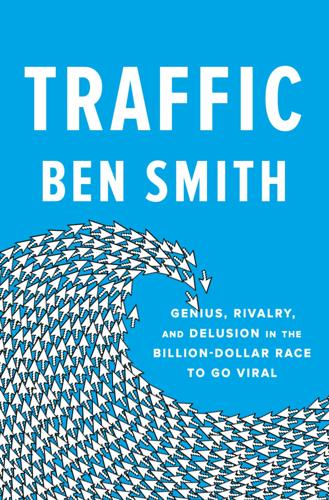
Traffic: Genius, Rivalry, and Delusion in the Billion-Dollar Race to Go Viral
by
Ben Smith
Published 2 May 2023
But the company’s obsession with metrics, with giving people exactly what they would react most strongly to, had produced almost the exact opposite of what Mark Zuckerberg promised—a nation that was alternately angry and horrified, and uniquely preoccupied with fighting on Facebook about race. What that meant for BuzzFeed, which had followed Facebook to this precipice, was “pressure to make bad content or underperform.” While BuzzFeed wrestled with the new Facebook incentives, other corners of the internet had fewer qualms. Times reporter Kevin Roose had begun looking at the pieces of content that were actually dominating Facebook, using a tool called CrowdTangle. The results were almost entirely confrontational right-wing articles. Writers like the Andrew Breitbart’s protégé Ben Shapiro, and the former BuzzFeed writer Benny Johnson, were now on top.
…
Go to note reference in text Trump’s own campaign: Philip Bump, “All the Ways Trump’s Campaign Was Aided by Facebook, Ranked by Importance,” Washington Post, March 22, 2018, https://www.washingtonpost.com/news/politics/wp/2018/03/22/all-the-ways-trumps-campaign-was-aided-by-facebook-ranked-by-importance. Go to note reference in text Still, the explanation that some: Kevin Roose, Sheera Frankel, and Mike Isaac, “Don’t Tilt Scales against Trump, Facebook Executive Warns,” New York Times, January 7, 2020, https://www.nytimes.com/2020/01/07/technology/facebook-trump-2020.html. Go to note reference in text Chapter 29—The Dossier There, Steele calmly shared: Barry Meier, Spooked: The Trump Dossier, Black Cube, and the Secret Rise of Private Spies (New York: Harper, 2021).
…
This book also relied heavily on interviews with dozens of its participants, named and unnamed in the text, including Cory Arcangel, Scott Baker, Jim Bankoff, David Barstow, Chris Batty, Matthew Bechstein, Ken Bensinger, Kate Bolger, Erin Bried, Nic Carlson, Michael Charles, Jessica Coen, Ana Marie Cox, Jake Dobkin, Sam Dolnick, Miriam Elder, Scott English, Sheera Frenkel, Michael Frumin, David Galbraith, Andrew Gauthier, Jen Gerson, Michael Golden, Emily Gould, Leba Haber, Donna Haraway, Fred Harman, Shani Hilton, Cates Holderness, Anna Holmes, James Hong, Meg Hourihan, Arianna Huffington, Chris Johanesen, Benny Johnson, John Johnson, Saeed Jones, Foster Kamer, Will Kane, Jason Kottke, Sarah Lacy, Scott Lamb, Jonathan Landman, Will Leitch, Jason Leopold, Sam Lessin, Cliff Levy, David Mack, Ornela March, Cameron Marlow, Joel Maske, Ashley McCollum, Bary Meier, Katherine Miller, Matt Mittenthal, Tracie Egan Morrissey, Dao Nguyen, Martin Nisenholtz, Jesse Oxfeld, Eli Pariser, Della Peretti, David Perpich, Will Porteous, Max Read, Oliver Reichenstein, Carole Robinson, Kevin Roose, Joe Rospars, Joshua Schachter, Vivian Schiller, Mark Schoofs, Ben Shapiro, Doree Shafrir, Jack Shepherd, Tim Shey, Rachel Sklar, Paul Smurl, Elizabeth Spiers, Scott Stanford, Lockhart Steele, Jon Steinberg, Colin Sterling, Dodai Stewart, Lee Stranahan, A. G. Sulzberger, Nabiha Syed, Ryan Tate, Owen Thomas, Katherine Thomson, Maureen Tkacik, Peggy Wang, Duncan Watts, Will Welch, Mark Wilkie, Lizz Winstead, Andy Yaco-Mink, and Katharine Zaleski, as well as many others including current and former executives at Facebook and Disney, current and former employees of BuzzFeed, and former employees of Gawker Media.

Don't Burn This Book: Thinking for Yourself in an Age of Unreason
by
Dave Rubin
Published 27 Apr 2020
I had this conversation recently with my father, who’s been a loyal subscriber to The New York Times for more than three decades and is finally considering scrapping his subscription after the newspaper did a hatchet job on me in a cover story titled “The Making of a YouTube Radical.” In it, “journalist” Kevin Roose cites a young man, Caleb Cain, who watches conservative YouTube content and suddenly flirts with neo-Nazism. The June 2019 article (which included a montage of YouTubers on the front page) blamed me, plus a host of others, including podcast host Joe Rogan and commentator Philip DeFranco, for radicalizing a generation into disliking women, gays, and blacks—you know the drill.
…
Department of the Treasury, Bureau of Alcohol, Tobacco, and Firearms, “The Youth Crime Gun Interdiction Initiative (YCGII),” Crime Gun Trace Reports (1999): Highlights of the National Report, November 2000, www.atf.gov/file/5646/download. CHAPTER 8: LEARN HOW TO SPOT FAKE NEWS montage of YouTubers on the front page: Kevin Roose, “The Making of a YouTube Radical,” The New York Times, June 9, 2019. www.nytimes.com/images/2019/06/09/nytfrontpage/scan.pdf?module=inline. majority of Americans distrust the media: “Perceived Accuracy and Bias in the Media.” Knight Foundation, https://knightfoundation.org/reports/perceived-accuracy-and-bias-in-the-news-media/.

The Perfect Weapon: War, Sabotage, and Fear in the Cyber Age
by
David E. Sanger
Published 18 Jun 2018
Naturally, this was a false analogy: From the start, Facebook made its money not by selling connectivity, but by acting as the world’s seemingly friendly surveillance machine, then selling what it learned about users, individually and collectively. The old phone companies never did that. As my colleague Kevin Roose wrote, “Facebook can’t stop monetizing our personal data for the same reason Starbucks can’t stop selling coffee—it’s the heart of the enterprise.” Yet the idea that Facebook and its competitors could pursue that strategy and ignore the content of what was appearing on their platforms—and thus avoid editing on a massive scale—lay somewhere between naïveté and delusion.
…
the initial mistakes: Eric Lipton, David E. Sanger, and Scott Shane, “The Perfect Weapon: How Russian Cyberpower Invaded the U.S.,” New York Times, December 13, 2016, www.nytimes.com/2016/12/13/us/politics/russia-hack-election-dnc.html. CHAPTER XI: THREE CRISES IN THE VALLEY “If you had asked me”: Kevin Roose and Sheera Frenkel, “Mark Zuckerberg’s Reckoning: ‘This Is a Major Trust Issue,’ ” New York Times, March 22, 2018, www.nytimes.com/2018/03/21/technology/mark-zuckerberg-q-and-a.html. Twenty minutes after: “Paris Attacks: What Happened on the Night,” BBC News, December 9, 2015, www.bbc.com/news/world-europe-34818994.
…
Carter wrote a blistering assessment: Ash Carter, A Lasting Defeat: The Campaign to Destroy ISIS, Belfer Center for Science and International Affairs, October 2017, www.belfercenter.org/LastingDefeat#6. Stamos, then the chief security officer at Yahoo!: CNBC, “Yahoo Security Officer Confronts NSA Director,” YouTube video, 0:20, February 28, 2015, accessed April 10, 2018, www.youtube.com/watch?v=jJZNvEPyjlw. “Facebook can’t stop monetizing our personal data”: Kevin Roose, “Can Social Media Be Saved?,” New York Times, March 29, 2018, www.nytimes.com/2018/03/28/technology/social-media-privacy.html. Aftenposten called the company out: Espen Egil Hansen, “Dear Mark. I Am Writing This to Inform You That I Shall Not Comply with Your Requirement to Remove This Picture,” Aftenposten, September 8, 2016, www.aftenposten.no/meninger/kommentar/i/G892Q/Dear-Mark-I-am-writing-this-to-inform-you-that-I-shall-not-comply-with-your-requirement-to-remove-this-picture.

This Is How They Tell Me the World Ends: The Cyberweapons Arms Race
by
Nicole Perlroth
Published 9 Feb 2021
And David, Matt and I continue to cover cybersecurity threats to the 2020 election together. Some of the best reporting on the ethical debates currently playing out in Silicon Valley regarding security and disinformation belongs to my colleagues Sheera Frenkel, Cecilia Kang, Mike Isaac, Daisuke Wakabayashi, Kevin Roose, and Kate Conger. These collaborations have been the highlight of my career and this book would not have been possible without them. I also want to acknowledge the excellent reporting by my peers at Wired, Reuters, the Washington Post, and Vice’s Motherboard site as well as top-notch analysis from cryptographers like Paul Kocher and Peter Neumann and the security researchers at Area 1, Citizen Lab, CrowdStrike, FireEye, Google, Lookout, Microsoft, Recorded Future, Symantec, McAfee, Trend Micro, and others.
…
Ben Hubbard chronicled the Google and Apple apps that allowed Saudi men to track the movements of their female family members: “Apple and Google Urged to Dump Saudi App That Lets Men Track Women,” New York Times, February 14, 2019. Google’s project for the Pentagon and the ensuing backlash were also covered by my colleagues Scott Shane and Daisuke Wakabayashi for the Times: “A Google Military Project Fuels Internal Dissent,” April 5, 2018. For Google’s YouTube troubles, see my colleague Kevin Roose’s reporting in “The Making of a YouTube Radical,” New York Times, June 8, 2019. For an account of the problems with YouTube Kids, see Sapna Maheshwari, “On YouTube Kids, Startling Videos Slip Past Filters,” New York Times, November 4, 2017, which showed that videos encouraging suicide were slipping past YouTube’s filters.
…
North Korea’s strangely similar attack on Sony Pictures in December 2014 was chronicled by my colleague David Sanger and me for the Times: “U.S. Said to Find North Korea Ordered Cyberattack on Sony,” December 17, 2014. For media coverage of the Sony leaks, see Sam Biddle, “Leaked: The Nightmare Email Drama Behind Sony’s Steve Jobs Disaster,” Gawker, December 9, 2014, and Kevin Roose, “Hacked Documents Reveal a Hollywood Studio’s Stunning Gender and Race Gap,” Fusion, December 1, 2014. For the Obama Administration’s response, see David E. Sanger, Michael S. Schmidt, and Nicole Perlroth, “Obama Vows a Response to Cyberattack on Sony,” New York Times, December 19, 2014. For coverage of North Korea’s internet outage one week later, see Nicole Perlroth and David E.

Culture Warlords: My Journey Into the Dark Web of White Supremacy
by
Talia Lavin
Published 14 Jul 2020
The launderers inculcate their fans in a worldview that casts the modern world in an irredeemable and fearsome light, one full of sinister conspiracies engendered by the left. It draws on primal fears, on ego, on tribalism—on any number of human foibles—and ushers viewers inexorably rightward. In a groundbreaking article for the New York Times, journalist Kevin Roose, who has studied YouTube radicalization extensively, revealed one individual’s pathway through the video site to the far right.1 Caleb Cain—a twenty-six-year-old college dropout who spent five years as part of the alt-right before renouncing it publicly, and buying a gun to counter the death threats he received—sent Roose the entirety of his YouTube history, which consisted of more than twelve thousand videos.
…
Splinter News. August 30, 2018. https://splinternews.com/london-has-fallen-according-to-this-racist-wall-street-1828725242 23 https://dailystormer.su/austria-five-vibrants-convicted-of-gang-enriching-a-13-year-old-girl/. Chapter 7: Tween Racists, Bad Beanies, and The Great Casino Chase 1 Kevin Roose, “The Making of a YouTube Radical,” New York Times (June 8, 2019). https://www.nytimes.com/interactive/2019/06/08/technology/youtube-radical.html. 2 Robert Evans, “From Memes to Infowars: How 75 Fascist Activists Were ‘Red-Pilled,’” Bellingcat (October 11, 2018). https://www.bellingcat.com/news/americas/2018/10/11/memes-infowars-75-fascist-activists-red-pilled/. 3 Laura Smith, “In the Early 1980s, White Supremacist Groups Were Early Adopters (and Masters) of the Internet,” Timeline (October 11, 2017). https://timeline.com/white-supremacist-early-internet-5e91676eb847. 4 Christopher Miller, “Azov, Ukraine’s Most Prominent Ultranationalist Group, Sets Its Sights on U.S., Europe,” Radio Free Europe/Radio Liberty (November 14, 2018). https://www.rferl.org/a/azov-ukraine-s-most-prominent-ultranationalist-group-sets-its-sights-on-u-s-europe/29600564.html.
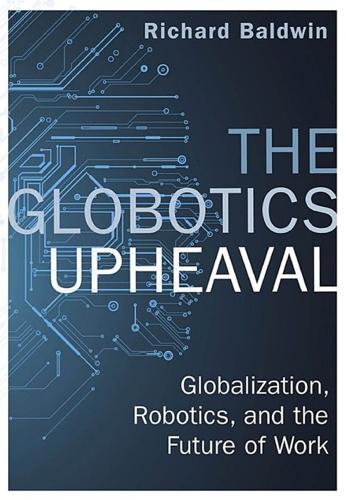
The Globotics Upheaval: Globalisation, Robotics and the Future of Work
by
Richard Baldwin
Published 10 Jan 2019
“All you need is self-driving cars to destabilize society . . . That one innovation will be enough to create riots in the street. And we’re about to do the same thing to retail workers, call center workers, fast-food workers, insurance companies, accounting firms.”3 Yang is—as New York Times writer Kevin Roose puts it—“a longer-than-long shot” presidential candidate, but his themes are likely to be taken up by more electable candidates. “If we don’t change things dramatically,” Yang says in his “Andrew Yang for President” video, children will grow up in a country with “fewer and fewer opportunities and a handful of companies and individuals reaping the gains from the new technologies while the rest of us struggle to find opportunities and lose our jobs.”
…
Francis Potter, “How the Hathersage Group Built a Global Development Team,” Upwork (blog), September 21, 2016, https://www.upwork.com/blog/2016/09/hathersage-group-global-development-team/. 2. Elain S. Oran and Forman A. Williams, “The Physics, Chemistry, and Dynamics of Explosions,” Phil. Trans. R. Soc. A. 370, no. 1960 (2012): 534–543, http://rsta.royalsocietypublishing.org/content/roypta/370/1960/534.full.pdf. 3. Kevin Roose, “His 2020 Campaign Message: The Robots Are Coming,” New York Times, February 10, 2018, https://www.nytimes.com/2018/02/10/technology/his-2020-campaign-message-the-robots-are-coming.html. 4. Erik Brynjolfsson and Andrew McAfee, The Second Machine Age: Work, Progress, and Prosperity in a Time of Brilliant Technologies (New York: Norton & Company, 2014). 5.

Off the Edge: Flat Earthers, Conspiracy Culture, and Why People Will Believe Anything
by
Kelly Weill
Published 22 Feb 2022
YouTube democratized video, letting kids broadcast themselves into a public space that was once reserved for professional news outlets. Quality was no barrier to participation. If anything, no-budget videos became YouTube’s hallmark. The site’s apparently unfiltered clips contrasted with traditional media, and gave its videos an air of gritty reality. “YouTube positioned itself very early on as alternative media,” Kevin Roose, a New York Times technology columnist, told me. “It was not just different from TV in the sense that it was lower-budget, mostly amateur, and not as centralized. It was also seen as more real, more authentic.” Conspiracy theorists frequently accuse the media of plotting to withhold truths and keep the public in the dark.
…
Madrigal, “The Small, Small World of Facebook’s Anti-Vaxxers,” Atlantic, February 27, 2019, https://www.theatlantic.com/health/archive/2019/02/anti-vaxx-facebook-social-media/583681. 98 banning Natural News Kelly Weill, “Facebook Removes Conspiracy Site Natural News,” Daily Beast, June 10, 2019, www.thedailybeast.com/facebook-removes-conspiracy-site-natural-news. 98 “D-Day against the tech giants” Beth Mole, “Facebook Bans Health and Conspiracy Site Natural News [Updated],” Ars Technica, June 10, 2019, arstechnica.com/science/2019/06/natural-news-hawker-of-vitamins-and-far-right-conspiracies-banned-from-facebook. 5: The Rabbit Hole 102 orders from the government Q drop #760, February 15, 2018. 102 withholds important stories Lee Rainie, Scott Keeter, and Andrew Perrin, “Trust and Distrust in America,” Pew Research Center, July 22, 2019, www.pewresearch.org/politics/2019/07/22/trust-and-distrust-in-america. 104 “steer you toward Crazytown” Kevin Roose, “The Making of a YouTube Radical,” New York Times, June 8, 2019, www.nytimes.com/interactive/2019/06/08/technology/youtube-radical.html. 105 “structural problem” Guillaume Chaslot (@gchaslot), “A few example of flat earth videos that were promoted by YouTube #today,” Twitter, November 18, 2018, 8:21 a.m., https://twitter.com/gchaslot/status/1064554284757340161. 105 promoted Flat Earth as reality Guillaume Chaslot, “How YouTube’s A.I.
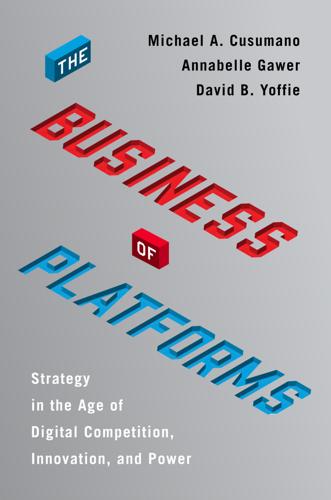
The Business of Platforms: Strategy in the Age of Digital Competition, Innovation, and Power
by
Michael A. Cusumano
,
Annabelle Gawer
and
David B. Yoffie
Published 6 May 2019
Yoffie and Dylan Minor, “Upwork: Creating the Human Cloud” (Boston: Harvard Business School Publishing, Case #9-717-475, May 2017). 30.Sheera Frenkel, “Facebook Will Use Artificial Intelligence to Find Extremist Posts,” New York Times, June 15, 2017; and TripAdvisor, “Review Moderation and Fraud Detection FAQ,” https://www.tripadvisor.co.uk/vpages/review_mod_fraud_detect.html (accessed July 3, 2017). 31.Airbnb, “Updated Terms of Service,” https://www.airbnb.co.uk/terms (accessed July 3, 2017). 32.Annabelle Gawer and Michael A. Cusumano, Platform Leadership: How Intel, Microsoft, and Cisco Drive Industry Innovation (Boston: Harvard Business School Press, 2002). 33.Chuck Jones, “Apple’s App Store Generated Over $11 Billion in Revenue for the Company Last Year,” Forbes, January 6, 2018. 34.Kevin Roose, “Facebook Emails Show Its Real Mission: Making Money and Crushing Competition,” New York Times, December 5, 2018. 35.Georgia Wells, “Snapchat Zigs Where Facebook Zags,” Wall Street Journal, June 14, 2018. 36.Expedia Affiliate Network, “eps rapid,” http://developer.ean.com/ (accessed July 5, 2017); and “API,” https://www.ean.com/solutions/api (accessed July 5, 2017). 37.
…
“Top Facebook Executive Defended Data Collection in 2016 Memo—and Warned That Facebook Could Get People Killed,” BuzzFeed News, https://www.buzzfeednews.com/article/ryanmac/growth-at-any-cost-top-facebook-executive-defended-data#.iuq17wEa9 (accessed August 20, 2018). 28.Hannah Kuchler, “Inside Facebook’s Content Clean-up Operation,” Financial Times, April 24, 2018; and “Transcript of Mark Zuckerberg’s Senate Hearing,” Washington Post, April 10, 2018. 29.Jen Kirby, “9 Questions About Facebook and Data Sharing You Were Too Embarrassed to Ask,” Vox, April 10, 2018. 30.Kevin Roose, “How Facebook’s Data Sharing Went from a Feature to a Bug,” New York Times, March 19, 2018. 31.Thompson, “Mark Zuckerberg Talks.” 32.Reynolds, “When Digital Platforms Become Censors.” 33.Elaine Pofeldt, “Are We Ready for a Workforce That Is 50% Freelance?” Forbes, October 17, 2017. 34.Ibid. 35.Noam Scheiber, “Gig Economy Business Model Dealt a Blow in California Ruling,” New York Times, April 30, 2018. 36.Sarah Kessler, “The Gig Economy Won’t Last Because It Is Being Sued to Death,” Fast Company, February 17, 2015. 37.Andrei Hagiu and Julian Wright, “The Status of Works and Platforms in the Sharing Economy,” June 20, 2018, http://andreihagiu.com/wp-content/uploads/2018/07/Liquidity-constraint-06202018.pdf (accessed September 11, 2018); and Andrei Hagiu and Rob Biederman, “Companies Need an Option Between Contractor and Employee,” Harvard Business Review, August 21, 2015. 38.Kia Kokalitcheva, “Lyft to Pay $12.3 Million as Part of a Proposed Labor Lawsuit Settlement,” Fortune, January 27, 2016. 39.Jeff John Roberts, “Is a Maid an Employee?

The Meritocracy Trap: How America's Foundational Myth Feeds Inequality, Dismantles the Middle Class, and Devours the Elite
by
Daniel Markovits
Published 14 Sep 2019
and the firms expel: See Joe Patrice, “Biglaw Partners on the Hot Seat: Firms Are Demoting Partners Hand over Fist,” Above the Law, October 11, 2016, accessed July 13, 2018, https://abovethelaw.com/2016/10/biglaw-partners-on-the-hot-seat-firms-are-demoting-partners-hand-over-fist/, and Sara Randazzo, “Law Firms Demote Partners as Pressure Mounts over Profits,” Wall Street Journal, October 10, 2016, accessed July 13, 2013, www.wsj.com/articles/law-firms-demote-partners-as-pressure-mounts-over-profits-1476137818/. an annual “bonus day”: See Kevin Roose and Susanne Craig, “It’s Goldman Bonus Day,” New York Times, January 19, 2012, accessed July 16, 2018, https://dealbook.nytimes.com/2012/01/19/its-goldman-sachs-bonus-day/, and Susanne Craig, “It’s Bonus Week on Wall Street,” New York Times, January 15, 2013, accessed July 16, 2018, https://dealbook.nytimes.com/2013/01/15/its-bonus-week-on-wall-street/.
…
The use of “leaved” and “conceived” borrows from Philip Larkin, “Long Lion Days,” in Larkin, The Complete Poems, 323. “devours everything in its path”: See Anton Chekhov, The Cherry Orchard, in Anton Chekhov, Plays, trans. Elisaveta Fen (New York: Viking Penguin, 1959), 363. “Human Capital Management”: Kevin Roose, Young Money: Inside the Hidden World of Wall Street’s Post-Crash Recruits (New York: Grand Central Publishing, 2014), 35, and “Human Capital Management,” Goldman Sachs, accessed July 16, 2018, www.goldmansachs.com/careers/divisions/human-capital-management/. Fewer than one in one hundred jobs: Here see the calculations reported in Daniel Markovits, “How Much Redistribution Should There Be?
…
A standard “disciplinary joke”: Ho, Liquidated, 88. “the stamina to work”: Brian Dumaine and Lynn Fleary, “A Hot New Star in the Merger Game,” Fortune, February 17, 1986, accessed July 18, 2018, http://archive.fortune.com/magazines/fortune/fortune_archive/1986/02/17/67133/index.htm. “banker nine-to-five”: Kevin Roose, Young Money: Inside the Hidden World of Wall Street’s Post-Crash Recruits (New York: Grand Central Publishing, 2014), 114. “purposeful Darwinism” . . . “unreasonably high”: Kantor and Streitfeld, “Inside Amazon.” “can work long”: Kantor and Streitfeld, “Inside Amazon.” “a continual performance improvement”: Kantor and Streitfeld, “Inside Amazon.”
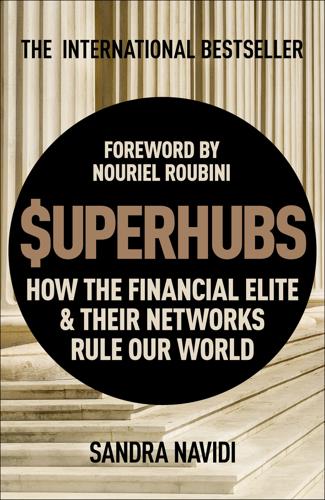
SUPERHUBS: How the Financial Elite and Their Networks Rule Our World
by
Sandra Navidi
Published 24 Jan 2017
Robert Frank, “Elon Musk’s Ex-Wife on Secret to Getting Rich: ‘Be Obsessed,’” CNBC, April 20, 2015, http://www.cnbc.com/2015/04/20/elon-musks-ex-wife-on-secret-to-getting-rich-be-obsessed.xhtml. 30. Ray Dalio, Principles. 31. Michelle Celarier & Lawrence Delevingne, “Ray Dalio’s Culture of Radical Truth,” Institutional Investor, March 2, 2011, http://www.institutionalinvestor.com/Article/2775995/Ray-Dalios-radical-truth.xhtml. 32. Kevin Roose, “Pursuing Self-Interest in Harmony with the Laws of the Universe and Contributing to Evolution Is Universally Rewarded,” New York, April 10, 2011, http://nymag.com/news/business/wallstreet/ray-dalio-2011-4. 33. Bess Levin, “Bridgewater Associates: Be the Hyena. Attack the Wildebeest,” Deal-breaker, May 10, 2010, http://dealbreaker.com/2010/05/bridgewater-associates-be-the-hyena-attack-the-wildebeest. 34.
…
Fortune, February 27, 2014, http://fortune.com/2014/02/27/is-there-a-suicide-contagion-on-wall-street. 12. Jessica Silver Greenberg and Susanne Craig, “Citi Chairman Is Said to Have Planned Chief’s Exit Over Months,” New York Times, October 25, 2012, http://www.nytimes.com/2012/10/26/business/citi-chairman-is-said-to-have-planned-pandits-exit-for-months.xhtml; Kevin Roose and Joe Coscarelli, “The Tuesday Massacre: The Details Behind Vikram Pandit’s Ouster at Citigroup,” New York, October 16, 2012, http://nymag.com/daily/intelligencer/2012/10/vikram-pandit-out-as-citigroup-ceo.xhtml; Joe Weisenthal, “Stunning NYT Report Explains How Vikram Pandit Was Really Fired From Citi,” Business Insider, October 26, 2012, http://www.businessinsider.com/how-vikram-pandit-was-ousted-from-citi-2012-10; Joe Hagan, “Most Powerless Powerful Man on Wall Street,” New York Magazine, March 1, 2009, http://nymag.com/news/businessfinance/55035. 13.

The Bond King: How One Man Made a Market, Built an Empire, and Lost It All
by
Mary Childs
Published 15 Mar 2022
Pimco evacuated hundreds of employees from the Midtown building, temporarily relocating them upstate. “This is an issue that is far from uncommon in New York City,” a spokesperson told Fox Business’s Charlie Gasparino, after he broke the humiliating story and it raced from him to Forbes, New York magazine, Gothamist. Kevin Roose at New York magazine wondered “whether the infestation might be part of an elaborate revenge scheme concocted by a booted Pimco executive whose name may or may not rhyme with ‘Bohamed Bel-Ferrian.’” * * * On August 19, Pimco’s Executive Committee convened for a strategy meeting. As they took their seats around the table, they buckled up for a long one.
…
Investment Outlook, Pimco.com, May 2014. “I’m sticking with live chirping”: Bill Gross, “Time (and Money) in a Cellphone,” Investment Outlook, Pimco.com, June 5, 2014. “far from uncommon in New York City”: Jennifer Ablan, “Pimco NYC Office Tackles Bed Bug Infestation, Fumigates,” Reuters, August 20, 2014. “‘Bohamed Bel-Ferrian’”: Kevin Roose, “Financial Firm PIMCO’s New York Office Is Reportedly Besieged by Bedbugs (Updated),” New York, August 20, 2014. 15. Minutes “maximize wallet share”: Landon Thomas, Jr., “Pimco Suit Sheds Light on Murky Investor Fees,” The New York Times, November 9, 2015 “bearing evidence of recent use”: Bess Levin, “Jeffrey Gundlach NOT Set Up by TCW, Big Fan of ‘Dr.

The Death of Truth: Notes on Falsehood in the Age of Trump
by
Michiko Kakutani
Published 17 Jul 2018
How Americans Decide What News to Trust on Social Media,” American Press Institute, Mar. 20, 2017; Elisa Shearer and Jeffrey Gottfried, “News Use Across Social Media Platforms 2017,” Pew Research Center, Sept. 7, 2017. Fake news is nothing new: “Yellow Journalism,” in Crucible of Empire: The Spanish-American War, PBS, pbs.org; Jacob Soll, “The Long and Brutal History of Fake News,” Politico, Dec. 18, 2016; “Gaius Julius Caesar: The Conquest of Gaul,” Livius.org. man behind the massacre: Kevin Roose, “After Las Vegas Shooting, Fake News Regains Its Megaphone,” New York Times, Oct. 2, 2017; Jennifer Medina, “A New Report on the Las Vegas Gunman Was Released. Here Are Some Takeaways,” New York Times, Jan. 19, 2018. During the last three months: Craig Silverman, “This Analysis Shows How Viral Fake Election News Stories Outperformed Real News on Facebook,” BuzzFeed, Nov. 16, 2016.

The Metaverse: And How It Will Revolutionize Everything
by
Matthew Ball
Published 18 Jul 2022
Hannah Murphy and Joshua Oliver, “How NFTs Became a $40bn Market in 2021,” Financial Times, December 31, 2021, accessed January 4, 2022. Note, this sum, $40.9 billion, is limited to the Ethereum blockchain, which is estimated to have 90% share of NFT transactions. 5. Kevin Roose, “Maybe There’s a Use for Crypto After All,” New York Times, February 6, 2022, accessed February 7, 2022, https://www.nytimes.com/2022/02/06/technology/helium-cryptocurrency-uses.html. 6. Kevin Roose, “Maybe There’s a Use for Crypto After All,” New York Times, February 6, 2022, accessed February 7, 2022, https://www.nytimes.com/2022/02/06/technology/helium-cryptocurrency-uses.html. 7. Helium, accessed March 5, 2022, https://explorer.helium.com/hotspots. 8.

The Geek Way: The Radical Mindset That Drives Extraordinary Results
by
Andrew McAfee
Published 14 Nov 2023
Today’s tech giants have solved many hard problems, but the gravity-like pull of bureaucratization still bedevils them. In its early years Facebook was in the eyes of many an archetypal Internet-era company, one that stayed lean and moved fast. But as it aged and became Meta, it bulked up and slowed down. By 2021 it was being described by New York Times technology columnist Kevin Roose as a “lumbering bureaucracy.” Its growth and valuation soared during the COVID pandemic, but as the lockdowns eased and people around the world returned to in-person interactions, it became clear that Meta had become far too large. In layoffs announced in late 2022 and 2023, the company cut about a quarter of its workforce.
…
utm_source=pocket_saves. 21 “History suggests”: Joseph Patrick Henrich, The Secret of Our Success: How Culture Is Driving Human Evolution, Domesticating Our Species, and Making Us Smarter (Princeton, NJ: Princeton University Press, 2016), loc. 3353, Kindle. 22 wrote a blog post: Brian Armstrong, “Coinbase Is a Mission Focused Company,” Coinbase (blog), September 29, 2018, www.coinbase.com/blog/coinbase-is-a-mission-focused-company. 23 More than one-third: Casey Newton, “Inside the All-Hands Meeting That Led to a Third of Basecamp Employees Quitting,” The Verge, May 3, 2021, www.theverge.com/2021/5/3/22418208/basecamp-all-hands-meeting-employee-resignations-buyouts-implosion. 24 made the right decision: Brian Armstrong (@brian_armstrong), “1/ Wanted to share some thoughts on the recent Coinbase story around our mission,” Twitter, 8:01 p.m., September 30, 2021, https://twitter.com/brian_armstrong/status/1443727729476530178. 25 “lumbering bureaucracy”: Kevin Roose, “The Metaverse Is Mark Zuckerberg’s Escape Hatch,” New York Times, October 29, 2021, www.nytimes.com/2021/10/29/technology/meta-facebook-zuckerberg.html. 26 a quarter of its workforce: Clare Duffy, “Meta’s Business Groups Cut in Latest Round of Layoffs,” CNN, May 24, 2023, https://www.cnn.com/2023/05/24/tech/meta-layoffs-business-groups/index.html. 27 “ways to be scrappier”: Naomi Nix, “Mark Zuckerberg Unveils ‘Scrappier’ Future at Meta After Layoffs,” Washington Post, May 25, 2023, www.washingtonpost.com/technology/2023/05/25/meta-layoffs-future-facebook-instagram-company/. 28 “As we add different groups”: Mark Zuckerberg, “Update on Meta’s Year of Efficiency,” About Facebook, March 14, 2023, https://about.fb.com/news/2023/03/mark-zuckerberg-meta-year-of-efficiency/. 29 “war against the bureaucracy”: Brad Stone, Amazon Unbound: Jeff Bezos and the Invention of a Global Empire (New York: Simon & Schuster, 2022), 264. 30 advertising business: Mark Di Stefano and Jessica Toonkel, “Amazon’s Ad Staffers Flee amid Complaints of Bloat, Bureaucracy,” The Information, June 24, 2022, www.theinformation.com/articles/amazons-ad-staffers-flee-amid-complaints-of-bloat-bureaucracy. 31 at AWS: Kevin McLaughlin, “AWS’ New CEO Faces a Fresh Challenge: Bureaucracy,” The Information, July 12, 2021, www.theinformation.com/articles/aws-new-ceo-faces-a-fresh-challenge-bureaucracy. 32 “aging professional athletes”: Graham Averill, “The Secret to Athletic Longevity Is Surprisingly Simple,” Outside Online, May 17, 2018, www.outsideonline.com/health/training-performance/athletic-longevity-secrets-play-on-book/.
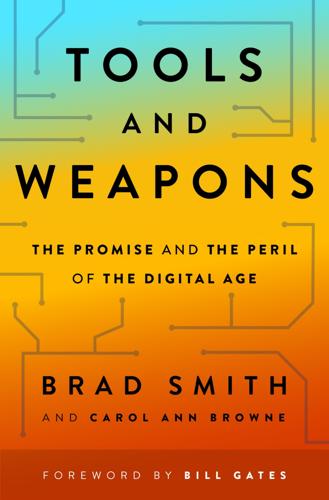
Tools and Weapons: The Promise and the Peril of the Digital Age
by
Brad Smith
and
Carol Ann Browne
Published 9 Sep 2019
Warner points to the expected spread of “deep fakes,” or “sophisticated audio and image synthesis tools that can generate fake audio or video files falsely depicting someone saying or doing something,” as an additional reason to impose new legal responsibilities on social media sites to police their content.16 As the world has witnessed more horrifying acts amplified on social media, political pressure has grown. A decade from now, we may look back at March 2019 as an inflection point. As Kevin Roose wrote in the New York Times, the horrific terrorist slaying of fifty-one innocent Muslims on March 15 in two mosques in Christchurch, New Zealand, in some ways “felt like a first—an internet-native mass shooting, conceived and produced entirely within the irony-soaked discourse of modern extremism.”17 As he described, “The attack was teased on Twitter, announced on the online message board 8chan and broadcast live on Facebook.
…
Advocates of online free speech at the time had argued that if controls were as tight on internet communication as with offline communication, the constant threat of litigation would intimidate individuals from weighing in on important issues of public concern.” Marie K. Shanahan, Journalism, Online Comments, and the Future of Public Discourse (New York: Routledge, 2018), 90. Back to note reference 15. Ibid., 8. Back to note reference 16. Kevin Roose, “A Mass Murder of, and for, the Internet,” New York Times, March 15, 2019, https://www.nytimes.com/2019/03/15/technology/facebook-youtube-christchurch-shooting.html. Back to note reference 17. Ibid. Back to note reference 18. Matt Novak, “New Zealand’s Prime Minister Says Social Media Can’t Be ‘All Profit, No Responsibility,’” Gizmodo, March 19, 2019, https://gizmodo.com/new-zealands-prime-minister-says-social-media-cant-be-a-1833398451.
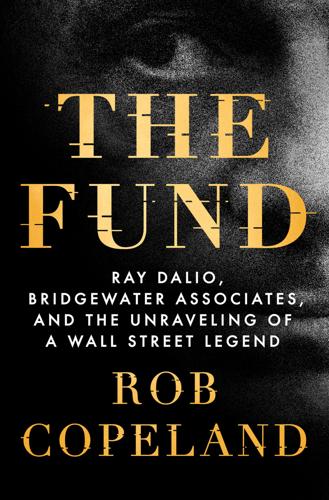
The Fund: Ray Dalio, Bridgewater Associates, and the Unraveling of a Wall Street Legend
by
Rob Copeland
Published 7 Nov 2023
A quadrant of high school friends—Emily, Hulli, Jess, and Sam—never failed with their enthusiasm or preorders. This narrative benefited deeply from original journalism from others. These include my former colleagues Michelle Celarier and Lawrence Delevingne at Absolute Return; Stephen Taub at Institutional Investor; John Cassidy at The New Yorker; Kevin Roose at New York; Alexandra Stevenson and Matt Goldstein at The New York Times; and Kip McDaniel at seemingly everywhere. The research librarians of Duke University, my alma mater, also provided invaluable, pro bono assistance, as did my friend Patrick MacKenzie, a Harvard Business School alumnus with online archival access.
…
a glowing Fortune profile: Brian O’Keefe, “Inside the World’s Biggest Hedge Fund,” Fortune, March 19, 2009. second leg to the crisis was coming: This thesis turned out to be off base, so much so that Dalio would glaze over the year 2009 entirely in his autobiography, skipping directly from 2008 to 2010. an electronic repository: Kevin Roose, “The Billion-Dollar Aphorisms of Hedge-Fund Cult Leader Ray Dalio,” New York, April 8, 2011. swiftly meet the shredder: Lawyers for Dalio and Bridgewater say that case studies such as Stefanova’s were played for employees and job applicants “to help convey Bridgewater’s culture and to give all employees a chance to discuss it and debate it.”

Automation and the Future of Work
by
Aaron Benanav
Published 3 Nov 2020
Banks, Look to Windward, Pocket Books, 2000; as well as his “Notes on the Culture,” collected in Banks, State of the Art, Night Shade Books, 2004. 10 See, respectively, Claire Cain Miller, “A Darker Theme in Obama’s Farewell: Automation Can Divide Us,” New York Times, January 12, 2017; Kessler, “Zuckerberg’s Opiate For the Masses”; Eduardo Porter, “Jobs Threatened by Machines: A Once ‘Stupid’ Concern Gains Respect,” New York Times, June 7, 2016; Kevin Roose, “His 2020 Campaign Message: The Robots Are Coming,” New York Times, February 12, 2018; Andrew Yang, The War on Normal People: The Truth about America’s Disappearing Jobs and Why Universal Basic Income Is Our Future, Hachette, 2018; Andy Stern, Raising the Floor: How a Universal Basic Income Can Renew Our Economy and Rebuild the American Dream, PublicAffairs, 2016. 11 Nick Srnicek and Alex Williams, Inventing the Future: Postcapitalism and a World without Work, Verso, 2015, p. 112. 12 Peter Frase, Four Futures: Life after Capitalism, Verso, 2016; Manu Saadia, Trekonomics: The Economics of Star Trek, Inkshares, 2016. 13 Srnicek and Williams, Inventing the Future, p. 127. 14 Aaron Bastani, Fully Automated Luxury Communism: A Manifesto, Verso, 2019. 15 Martin Ford argues that the pandemic will “change consumer preference and really open up new opportunities for automation,” as quoted in Zoe Thomas, “Coronavirus: Will Covid-19 speed up the use of robots to replace human workers?

The Lonely Century: How Isolation Imperils Our Future
by
Noreena Hertz
Published 13 May 2020
And they consciously designed their offices so that when people were there, they wanted to socialise, not only to alleviate employee loneliness but for more pragmatic purposes too. ‘The reason tech companies have micro-kitchens and free snacks is not because they think people are going to starve between 9 a.m. and noon,’ Bock told the New York Times’s Kevin Roose, ‘it’s because that’s where you get those moments of serendipity.’46 At work as in our private lives, contact beats contactless and physical proximity is crucial for creating a sense and spirit of community. Incentivising kindness Of course, being in the office doesn’t necessarily mean being more sociable.
…
Evidence from a Chinese Experiment’, The Quarterly Journal of Economics 130, no. 1 (November 2014), 165–218, https://doi.org/10.1093/qje/qju032. 44 Isabella Steger, ‘A Japanese aquarium under lockdown wants people to video call its lonely eels’, Quartz, 30 April 2020, https://qz.com/1848528/japan-aquarium-asks-people-to-video-call-eels-under-lockdown/. 45 Kevin Roose, ‘Sorry, But Working From Home is Overrated’, New York Times, 10 March 2020, https://www.nytimes.com/2020/03/10/technology/working-from-home.html. 46 Ibid. 47 In cities as various as Birmingham, Brasilia, Toronto, Istanbul, Bogotá, Rio de Janeiro and Los Angeles, the average daily commute is over an hour and a half often because housing costs in city centres have become simply unaffordable even for middle-class workers.

Team Human
by
Douglas Rushkoff
Published 22 Jan 2019
speech, June 12, 1987. demand the construction of walls Donald Trump, speech, Phoenix, August 31, 2016. 41. In 1945, when Vannevar Bush imagined the “memex,” on which computers were based Vannevar Bush, “As We May Think,” The Atlantic, July 1945. Similar tensions are rising in India, Malaysia, and Sudan Kevin Roose, “Forget Washington. Facebook’s Problems Ahead Are Far More Disturbing,” Washington Post, October 29, 2017. 42. Highways divided neighborhoods, particularly when they reinforced racial and class divisions Douglas Rushkoff, Life, Inc.: How the World Became a Corporation and How to Take It Back (New York: Random House, 2011).
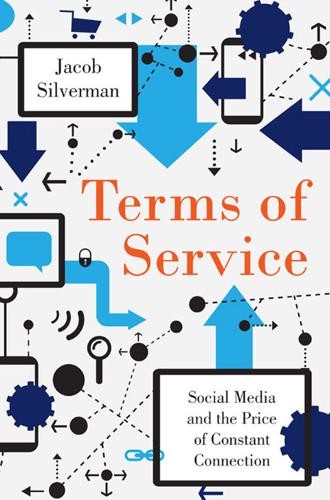
Terms of Service: Social Media and the Price of Constant Connection
by
Jacob Silverman
Published 17 Mar 2015
New York Times, October 30, 2013. nytimes.com/2013/10/31/technology/no-us-action-so-states-move-on-privacy-law.html. 187 Finding an Uber score: Aaron Landy. “How to Find Your Uber Passenger Rating.” Medium. June 27, 2014. medium.com/@aaln/how-to-find-your-uber-passenger-rating-4aa1d9cc927f. 188 Uber passenger rating: Kevin Roose. “Uber Anxiety: When Your Car Service Is Judging You Back.” New York. June 4, 2014. nymag.com/daily/intelligencer/2014/06/uber-anxiety.html. 189 Percent of fake reviews: Dave Streitfeld. “Give Yourself 5 Stars? Online, It Might Cost You.” New York Times. Sept. 22, 2013. nytimes.com/2013/09/23/technology/give-yourself-4-stars-online-it-might-cost-you.html. 189 Average Yelp review: Seth Graham-Felsen.
…
“Why the Sharing Economy Isn’t.” 245 Nandini Balial background and TaskRabbit experience: Author interviews with Nandini Balial. July and August 2014. 249 “a human right”: Queena Kim. “Mark Zuckerberg: Internet Connectivity Is a Human right.” Marketplace. Aug. 21, 2013. marketplace.org/topics/tech/mark-zuckerberg-internet-connectivity-human-right. 249 “Companies are transcending power”: Kevin Roose. “The Government Shutdown Has Revealed Silicon Valley’s Dysfunction Fetish.” New York. Oct 16, 2013. nymag.com/daily/intelligencer/2013/10/silicon-valleys-dysfunction-fetish.html. 250 “the paper belt”: Nick Statt. “A Radical Dream for Making Techno Utopias a Reality.” CNET. Oct. 19, 2013. cnet.com/8301-1023_3-57608320-93/a-radical-dream-for-making-techno-utopias-a-reality. 250 “without having to deploy them”: Claire Cain Miller.

The Age of AI: And Our Human Future
by
Henry A Kissinger
,
Eric Schmidt
and
Daniel Huttenlocher
Published 2 Nov 2021
They also point out, correctly, that while many people worry about killer robots who achieve human-level sentience and mow us all down with Uzis, a much bigger near-term danger lurks in the innocuous-seeming AIs we all use every day, from the feed-ranking algorithms of social media apps to the automated dispatch systems that power Uber and Lyft.” —Kevin Roose, New York Times Book Review “This book is eye-opening, even for those who are already familiar with the technology. It puts AI and its development in the context of history, networks, nations and world order, philosophy and ethics like no other before—a context we greatly need if we’re going to partner with AI to chart our future.”
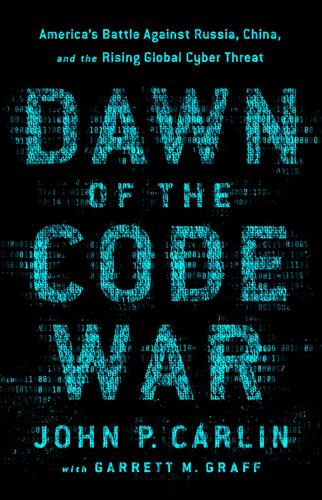
Dawn of the Code War: America's Battle Against Russia, China, and the Rising Global Cyber Threat
by
John P. Carlin
and
Garrett M. Graff
Published 15 Oct 2018
On Tuesday, four unreleased Sony movies were posted to the web by the Guardians of Peace, but it was still unclear what the “GOP” hackers wanted or why they were attacking Sony. Thanksgiving came and went, and Sony remained frozen. Finally, early Saturday morning, November 29, a tech reporter named Kevin Roose received another strange email: “Hi, I am the boss of G.O.P. A few days ago, we told you the fact that we had released Sony Pictures films including Annie, Fury and Still Alice to the web. Those can be easily obtained through internet search. For this time, we are about to release Sony Pictures data to the web.
…
Mike Fleming Jr., “Sony Hackers Paralysis Reaches Day Two—Update,” Deadline, November 25, 2014, www.deadline.com/2014/11/sony-computers-hacked-skull-message-1201295288/. 6. Fleming Jr., “Sony Hackers Paralysis Reaches Day Two—Update”; and Seal, “An Exclusive Look at Sony’s Hacking Saga.” 7. “Sony C.E.O. on How the Hack Changed Business—Full Conversation.” 8. Kevin Roose, “Hacked Documents Reveal a Hollywood Studio’s Stunning Gender and Race Gap,” Splinter, December 1, 2014, www.splinternews.com/hacked-documents-reveal-a-hollywood-studios-stunning-ge-1793844312. 9. Kim Zetter, “Sony Got Hacked Hard: What We Know and Don’t Know So Far,” Wired, December 3, 2014, www.wired.com/2014/12/sony-hack-what-we-know/. 10.

What's Yours Is Mine: Against the Sharing Economy
by
Tom Slee
Published 18 Nov 2015
The most that can be said for the practice of replacing actual jobs with the kind of precarious, state-subsidized work that Walker gets from Homejoy is that it is better than nothing, but it is undermining other workers as it does so, and while Walker gets some money he has no chance of moving on to actual employment. Kevin Roose of New York magazine was living in the San Francisco Bay area and asked for a house cleaning through Homejoy. A young man turned up and Roose made small talk, asking where he lived. “Well, right now I’m staying in a shelter in Oakland,” he said. I paused, unsure if I’d heard him right. A shelter?

Internet for the People: The Fight for Our Digital Future
by
Ben Tarnoff
Published 13 Jun 2022
Shapiro, “Cross-Country Trends in Affective Polarization,” National Bureau of Economic Research, 2020, and Yochai Benkler, Robert Faris, and Hal Roberts, Network Propaganda: Manipulation, Disinformation, and Radicalization in American Politics (Oxford: Oxford University Press, 2018), 296–339. 141, But the Right has immeasurably … The journalist Kevin Roose compiles the ten top-performing link posts by public US Facebook pages every day and publishes them on Twitter at twitter. com/FacebooksTop10. Partly in an attempt to rebut Roose’s work, Facebook began publishing a quarterly report on “widely viewed content” in August 2021 that claims to offer a more comprehensive view, given the fact that link posts are a relatively small percentage of the content seen by Facebook users as a whole.

Humans as a Service: The Promise and Perils of Work in the Gig Economy
by
Jeremias Prassl
Published 7 May 2018
As The Economist has noted, gig-economy entrepreneurs: have created a plethora of on-demand companies that put time-starved urban professionals in timely contact with job-starved workers, creating a sometimes distasteful caricature of technology-driven social disparity in the process; an article about the on-demand economy by Kevin Roose in New York magazine began with the revelation that the housecleaner he hired through Homejoy lived in a homeless shelter.66 Other concerns extend to the future of a competitive market economy at large. Consider, for example, the RSA’s worry that: [A] small number of sharing platforms have been able to scale their networks to an extent where they are beginning to show signs of monopoly power in influencing the price, output, and investment of an industry, as well as in limit- ing the entry of new competitors.67 Some gig-economy platforms are not simply nimble start-ups; they could pose a real threat of cornering markets and becoming entrenched monopolies.
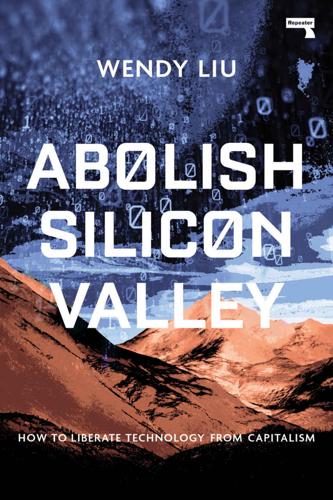
Abolish Silicon Valley: How to Liberate Technology From Capitalism
by
Wendy Liu
Published 22 Mar 2020
cntn_id=100660. 14 See https://medium.com/transit-app/welcome-to-scootopia-we-now-aggregate-all-electric-scooters-c31c7337d5e6. 15 I came across this suggestion in an interview with Aza Raskin, who co-founded the Center for Humane Technology, in issue 20 of Offscreen. 16 See, for example, “The Making of a YouTube Radical” by Kevin Roose for the New York Times, published June 8, 2019 at https://www.nytimes.com/interactive/2019/06/08/technology/youtube-radical.html. 17 See “Barcelona is Leading the Fightback Against Smart City Surveillance” by Thomas Graham for WIRED, published May 18, 2018 at https://www.wired.co.uk/article/barcelona-decidim-ada-colau-francesca-bria-decode. 18 Senator Warren published details of the plan via Medium on March 8, 2019, at https://medium.com/@teamwarren/heres-how-we-can-break-up-big-tech-9ad9e0da324c. 19 Although the underlying protocols are open, and although web browsers typically rely on open source technology, most browser usage falls under the purview of private corporations who are able to build moats through integrations with their other products.

The Twittering Machine
by
Richard Seymour
Published 20 Aug 2019
Aamna Mohdin, ‘The far-right was responsible for the majority of America’s extremist killings in 2017’, Quartz, 18 January 2018. 58. Media commentary has begun to argue that the internet . . . For examples of this style of coverage, see Amanda Coletta, ‘Quebec City Mosque shooter scoured Twitter for Trump, right-wing figures before attack’, Washington Post, 18 April 2018; Kevin Roose, ‘The far-right was responsible for the majority of America’s extremist killings in 2017’, New York Times, 28 October 2018. CONCLUSION 1. The average global internet user now spends . . . ‘Daily time spent on social networking by internet users worldwide from 2012 to 2017’, Statista, 2019; ‘People spend most of their waking hours staring at screens’, MarketWatch, 4 August 2018. 2.

The New Class Conflict
by
Joel Kotkin
Published 31 Aug 2014
Governing, April 2013, http://www.governing.com/topics/technology/gov-local-government-run-like-silicon-valley.html. 93. “Libertarian Island: A Billionaire’s Utopia,” The Week, August 18, 2011; Greg Baumann, “Rich State, Poor State: VC’s ‘Six Californias’ Divides Silicon Valley from Have-Nots,” Silicon Valley Business Journal, February 4, 2014. 94. Kevin Roose, “The Government Shutdown Has Revealed Silicon Valley’s Dysfunction Fetish,” Daily Intelligencer (blog), New York, October 16, 2013, http://nymag.com/daily/intelligencer/2013/10/silicon-valleys-dysfunction-fetish.html. 95. Susanne Posel, “Why Does Silicon Valley Want Elite Floating Cities & 6 Californias?”
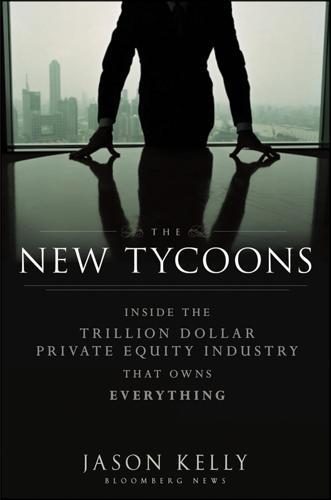
The New Tycoons: Inside the Trillion Dollar Private Equity Industry That Owns Everything
by
Jason Kelly
Published 10 Sep 2012
“This will become a smaller, more concentrated business, mainly because the funders need to buy in bulk,” said Howard Newman, the founder of Pine Brook Partners and the former vice chairman of Warburg Pincus. “The big firms will get bigger, investors will look to smaller and specialized firms for alpha, and the super returns will go away except for the very best funds.” Notes 1. Kevin Roose, “Decking the Halls, Carlyle Style,” New York Times Dealbook, December 15, 2011. http://dealbook.nytimes.com/2011/12/15/decking-the-halls-carlyle-style/ 2. “Private Equity Principles, Version 2.0,” January 2011. http://ilpa.org/index.php?file=/wp-content/uploads/2011/01/ILPA-Private-Equity-Principles-version-2.pdf&ref=http://ilpa.org/principles-version-2-0/&t=1333650254 3.

The Age of Stagnation: Why Perpetual Growth Is Unattainable and the Global Economy Is in Peril
by
Satyajit Das
Published 9 Feb 2016
The origins have been traced to a speech given by Martin Niemoller, the Lutheran pastor and victim of Nazi persecution, on 6 January 1946 to the representatives of the Confessing Church in Frankfurt. 8 Cited in Jason Tanz, “How Airbnb and Lyft Finally Got Americans to Trust Each Other,” Wired, 23 April 2014. www.wired.com/2014/04/trust-in-the-share-economy. 9 William Alden, “The Business Tycoons of Airbnb,” The New York Times Magazine, 30 November 2014. www.nytimes.com/2014/11/30/magazine/the-business-tycoons-of-airbnb.html. 10 Kevin Roose, “Does Silicon Valley Have a Contract-Worker Problem?” New York Magazine, 18 September 2014. http://nymag.com/daily/intelligencer/2014/09/silicon-valleys-contract-worker-problem.html. 11 Harley Shaken, a labor economist at the University of California at Berkeley, quoted in Louis Uchitelle, “The Wage That Meant Middle Class,” New York Times, 20 April 2008. 12 The Future of Retirement (2015) – Global Report, HSBC Holdings PLC. 13 Andrew Haldane, “The $100 Billion Question,” speech at the Institute of Regulation & Risk, North Asia (IRRNA) in Hong Kong, 30 March 2010. www.bankofengland.co.uk/archive/Documents/historicpubs/news/2010/036.pdf. 14 Paul Brodsky, “Plastics,” 14 November 2011. www.ritholtz.com/blog/2011/11/plastics/. 15 Martin Amis, “Martin Amis on God, Money, and What's Wrong with the GOP,” Newsweek, 10 September 2012. www.newsweek.com/martin-amis-god-money-and-whats-wrong-gop-64629. 16 Arnaud Marès, “Ask Not Whether Governments Will Default, but How,” Morgan Stanley, 26 August 2010. http://economics.uwo.ca/fubar_docs/july_dec10/morganstanleyreport_sept10.pdf. 17 Alan J.
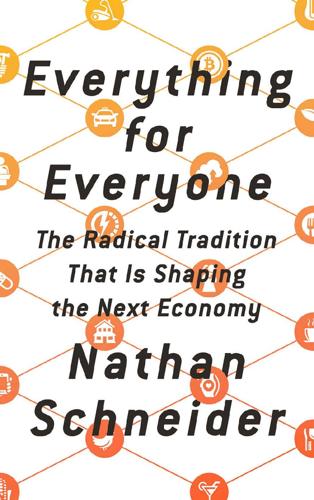
Everything for Everyone: The Radical Tradition That Is Shaping the Next Economy
by
Nathan Schneider
Published 10 Sep 2018
I have been a guest speaker at Singularity University’s Global Solutions Program. 12. Peter Diamandis, “I Am Peter Diamandis, from XPRIZE, Singularity University, Planetary Resources, Human Longevity Inc., and More. Ask Me Anything,” Reddit AMA discussion (July 11, 2014), reddit.com/r/Futurology/comments/2afiw5/i_am_peter_diamandis_from_xprize_singularity/ciulffv. 13. Kevin Roose, “In Conversation: Marc Andreessen,” New York (October 19, 2014); Sam Altman, “Technology and Wealth Inequality” (January 28, 2014), blog.samaltman.com/technology-and-wealth-inequality. 14. Recent overviews of universal basic income include Philippe Van Parijs and Yannick Vanderborght, Basic Income: A Radical Proposal for a Free Society and a Sane Economy (Harvard University Press, 2017), and Rutger Bregman, Utopia for Realists: How We Can Build the Ideal World (Little, Brown, 2017). 15.
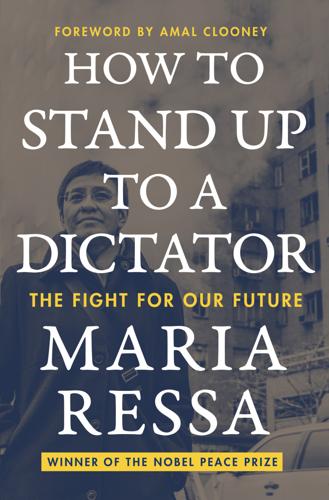
How to Stand Up to a Dictator
by
Maria Ressa
Published 19 Oct 2022
“EXCLUSIVE: Interview with Cambridge Analytica Whistle-Blower Christopher Wylie.” 15.Meghan Bobrowsky, “Facebook Disables Access for NYU Research into Political-Ad Targeting,” Wall Street Journal, August 4, 2021, https://www.wsj.com/articles/facebook-cuts-off-access-for-nyu-research-into-political-ad-targeting-11628052204. 16.Jeff Horwitz and Deepa Seetharaman, “Facebook Executive Shut Down Efforts to Make the Site Less Divisive,” Wall Street Journal, May 26, 2020, https://www.wsj.com/articles/facebook-knows-it-encourages-division-top-executives-nixed-solutions-11590507499. 17.Mike Isaac and Sheera Frenkel, “Facebook Braces Itself for Trump to Cast Doubt on Election Results,” New York Times, August 21, 2020, https://www.nytimes.com/2020/08/21/technology/facebook-trump-election.html. 18.Kevin Roose, Mike Isaac, and Sheera Frenkel, “Facebook Struggles to Balance Civility and Growth,” New York Times, November 24, 2020, https://www.nytimes.com/2020/11/24/technology/facebook-election-misinformation.html. 19.In 2020, Rappler began working with Sinan Aral and his team at MIT, as well as researchers at several other universities at home and abroad. 20.Bonz Magsambol, “Facebook Partners with Rappler, Vera Files for Fact-Checking Program,” Rappler, April 12, 2018, https://www.rappler.com/technology/social-media/200060-facebook-partnership-fact-checking-program/. 21.Manuel Mogato, “Philippines Complains Facebook Fact-Checkers Are Biased,” Reuters, April 16, 2018, https://www.reuters.com/article/us-philippines-facebook-idUSKBN1HN1EN. 22.Jordan Robertson, “Fake News Hub from 2016 Election Thriving Again, Report Finds,” Bloomberg, October 13, 2010, https://www.bloomberg.com/news/articles/2020-10-13/fake-news-hub-from-2016-election-thriving-again-report-finds#xj4y7vzkg. 23.
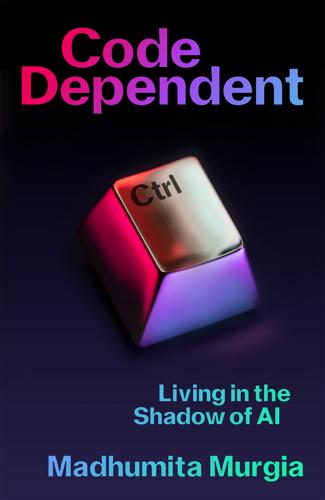
Code Dependent: Living in the Shadow of AI
by
Madhumita Murgia
Published 20 Mar 2024
Milo Van Slyck, a paralegal in Charleston, South Carolina, told ChatGPT about his deepest fears as a transgender man, his fraught relationship with his parents, his worries about how to cope with daily life.8 What the conversations contained were private between Milo, ChatGPT and OpenAI, so it’s hard to know what sort of advice it gave, but there have been other glimpses into unsettling exchanges between humans and AI chatbots, like Microsoft’s Bing. Kevin Roose, a New York Times journalist published the full transcript of a conversation he had with Bing, which unnerved him and thousands of the paper’s readers.9 In one of the excerpts, while talking about love, the Bing chatbot told Roose, ‘You’re married, but you’re not happy. You’re married, but you’re not satisfied.

On the Edge: The Art of Risking Everything
by
Nate Silver
Published 12 Aug 2024
GO TO NOTE REFERENCE IN TEXT Heat’s basketball arena: Lora Kelley, “FTX Spent Big on Sports Sponsorships. What Happens Now?,” The New York Times, November 11, 2022, sec. Business, nytimes.com/2022/11/10/business/ftx-sports-sponsorships.html. GO TO NOTE REFERENCE IN TEXT join a DAO: Kevin Roose, “What Are DAOs?,” The New York Times, March 18, 2022, sec. Technology, nytimes.com/interactive/2022/03/18/technology/what-are-daos.html. GO TO NOTE REFERENCE IN TEXT Art Basel weekend: “NFTs Took Over Art Basel,” Coinbase, December 8, 2021, coinbase.com/bytes/archive/nfts-took-over-art-basel-miami.
…
GO TO NOTE REFERENCE IN TEXT whether Austin Chen: As of December 27, 2023; “Will @Austin Chen Still Believe in God at the End of 2026?,” Manifold, manifold.markets/WilliamEhlhardt/will-austin-chen-still-believe-in-g. GO TO NOTE REFERENCE IN TEXT an orgy at Manifest: Kevin Roose, “The Wager That Betting Can Change the World,” The New York Times, October 8, 2023, sec. Technology, nytimes.com/2023/10/08/technology/prediction-markets-manifold-manifest.html. GO TO NOTE REFERENCE IN TEXT Magic: The Gathering: “Zvi Mowshowitz,” MTG Wiki, December 30, 2023, mtg.fandom.com/wiki/Zvi_Mowshowitz.
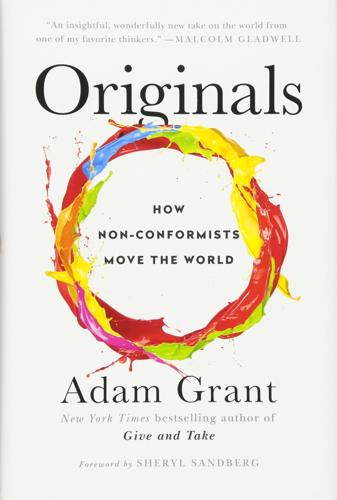
Originals: How Non-Conformists Move the World
by
Adam Grant
Published 2 Feb 2016
Bridgewater has prevented groupthink: Personal interviews with Zack Wieder and Mark Kirby, June 24, 2014; personal interviews with Zack Wieder, January 12, February 9 and 16, and April 16, 2015; personal interviews with Ray Dalio, July 31, 2014, and February 12, 2015; and many hours of additional interviews, observations, videos, and cases from current and former Bridgewater employees between June 2014 and January 2015; Ray Dalio, “Principles,” www.bwater.com/home/culture—principles.aspx; Robert Kegan, Lisa Lahey, Andy Fleming, and Matthew Miller, “Making Business Personal,” Harvard Business Review, April 2014, 45–52; Kevin Roose, “Pursuing Self-Interest in Harmony with the Laws of the Universe and Contributing to Evolution Is Universally Rewarded,” New York Magazine, April 10, 2001, http://nymag.com/news/business/wallstreet/ray-dalio-2011-4/; Jeffrey T. Polzer and Heidi K. Gardner, “Bridgewater Associates,” Harvard Business School Video Case 413-702, May 2013, www.hbs.edu/faculty/Pages/item.aspx?

Servant Economy: Where America's Elite Is Sending the Middle Class
by
Jeff Faux
Published 16 May 2012
Bob Ivry, Bradley Keoun, and Phil Kuntz, “Secret Fed Loans Gave Banks $13 Billion Undisclosed to Congress,”Bloomberg Markets, November 27, 2011, http://www.bloomberg.com/news/2011-11-28/secret-fed-loans-undisclosed-to-congress-gave-banks-13-billion-in-income.html. 21. Thomas M. Hoeing, “Too Big to Succeed,” New York Times, December 1, 2010. 22. Eric Dash, “The Lucrative Fall from Grace,” New York Times, September 30, 2011. 23. Susann Craig and Kevin Roose, “Wallets Out, Wall Street Dares to Indulge,”New York Times, November 23, 2010. 24. Phil Angelides, “Will Wall Street Ever Face Justice?,” New York Times, March 2, 2012. 25. Gretchen Morgenson, “It Has a Fancy Name, But Will It Get Tough?,” New York Times, January 28, 2012. 26. Gretchen Morgenson and Louise Story, “As Wall St.
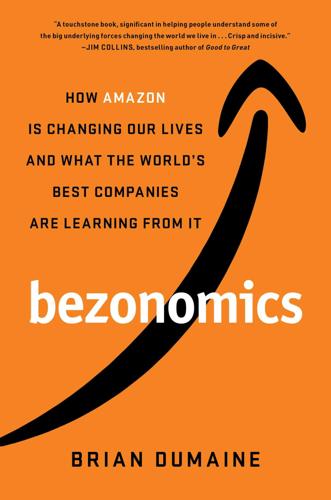
Bezonomics: How Amazon Is Changing Our Lives and What the World's Best Companies Are Learning From It
by
Brian Dumaine
Published 11 May 2020
Businesses not only have to compete: “Marketplaces Year in Review 2018,” Marketplace Pulse, https://www.marketplacepulse.com/marketplaces-year-in-review-2018#amazonsellersfunnel. In its defense: “Small Business Means Big Opportunity.” To say that these sellers: Adam Levy, “Amazon’s Third-Party Marketplace Is Worth Twice as Much as Its Own Retail Operations,” The Motley Fool, March 7, 2019. At one point, some 90 percent: Kevin Roose, “Inside the Home of Instant Pot, the Kitchen Gadget That Spawned a Religion,” New York Times, December 17, 2017. In late 2018, Amazon: Eugene Kim, “Amazon Has Been Promoting Its Own Products at the Bottom of Competitors’ Listings,” CNBC, October 2, 2018. They also seem designed: Julia Angwin and Surya Mattu, “Amazon Says It Puts Customers First.
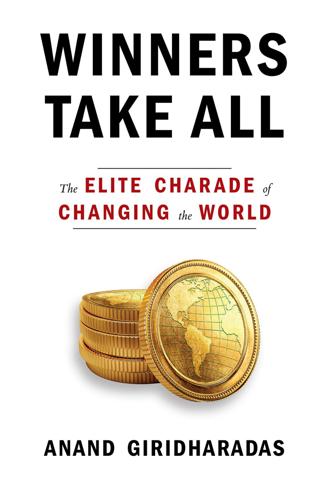
Winners Take All: The Elite Charade of Changing the World
by
Anand Giridharadas
Published 27 Aug 2018
The technology investor Balaji Srinivasan called for the winners of the digital revolution to secede from the ungrateful world of Luddites and complainers—“Silicon Valley’s ultimate exit,” as he put it—using tools, like those Snowden had imagined, to “build an opt-in society, ultimately outside the United States, run by technology.” What connects these various notions is a fantasy of living free of government. These rich and powerful men engage in what the writer Kevin Roose has called “anarchist cheerleading,” in keeping with their carefully crafted image as rebels against the authorities. To call for a terrain without rules in the way they do, to dabble in this anarchist cheerleading, may be to sound like you wished for a new world of freedom on behalf of humankind.
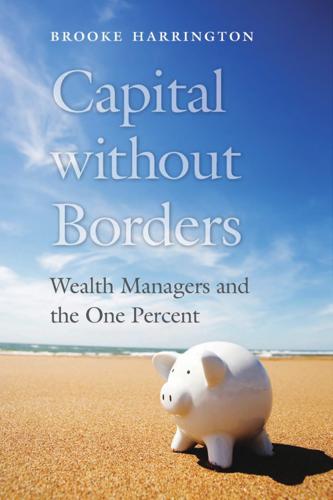
Capital Without Borders
by
Brooke Harrington
Published 11 Sep 2016
Exposing the Geographies of the Super-rich,” Geoforum 35 (2004): 402. 63. Thomas Volscho and Nathan Kelly, “The Rise of the Super-Rich: Power Resources, Taxes, Financial Markets, and the Dynamics of the Top 1 Percent, 1949 to 2008,” American Sociological Review 77 (2012): 679–699. 64. Nicholas Confessore, Peter Lattman, and Kevin Roose, “Close Ties to Goldman Enrich Romney’s Public and Private Lives,” New York Times, January 27, 2012. 65. Mayer Zald and Michael Lounsbury, “The Wizards of Oz: Towards an Institutional Approach to Elites, Expertise and Command Posts,” Organization Studies 31 (2010): 980. 66. Zucman, The Hidden Wealth of Nations, 47. 67.
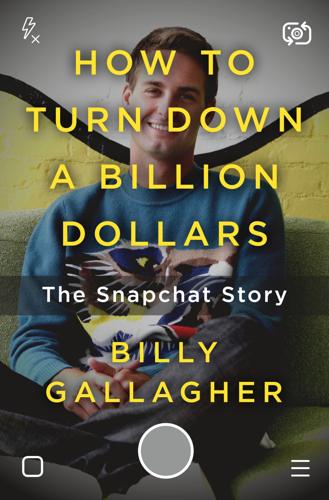
How to Turn Down a Billion Dollars: The Snapchat Story
by
Billy Gallagher
Published 13 Feb 2018
Thank you to Jamie Joseph and the entire team at Virgin Books UK. One of the most enjoyable aspects of writing this book has been talking to other authors about their experiences. I truly appreciate all the authors who generously gave me their time and advice, notably Alex Banayan, Nick Bilton, Matthew Berry, Blake Harris, Kevin Roose, and Ashlee Vance. A special thank-you to Larry Langton and Langton Media for inspiring me to think about this book and these characters in a new light. Thank you to Mary Ritti and the Snapchat PR team for their help with fact-checking. I am very grateful to all of the teachers, students, and alumni of The Haverford School, where I learned to read and write and, most important, how to appreciate both.

The Uninhabitable Earth: Life After Warming
by
David Wallace-Wells
Published 19 Feb 2019
This goes especially for my bosses Jared Hohlt, Adam Moss, and Pam Wasserstein, and David Haskell, my editor and friend and co-conspirator. Other friends and co-conspirators also helped refine and reconceive what it was I was trying to do in this book, and to all of them I am so thankful, too: Isaac Chotiner, Kerry Howley, Hua Hsu, Christian Lorentzen, Noreen Malone, Chris Parris-Lamb, Willa Paskin, Max Read, and Kevin Roose. For a million unenumerable things, I’d also like to thank Jerry Saltz and Will Leitch, Lisa Miller and Vanessa Grigoriadis, Mike Marino and Andy Roth and Ryan Langer, James Darnton and Andrew Smeall and Scarlet Kim and Ann Fabian, Casey Schwartz and Marie Brenner, Nick Zimmerman and Dan Weber and Whitney Schubert and Joey Frank, Justin Pattner and Daniel Brand, Caitlin Roper, Ann Clarke and Alexis Swerdloff, Stella Bugbee, Meghan O’Rourke, Robert Asahina, Philip Gourevitch, Lorin Stein, and Michael Grunwald.
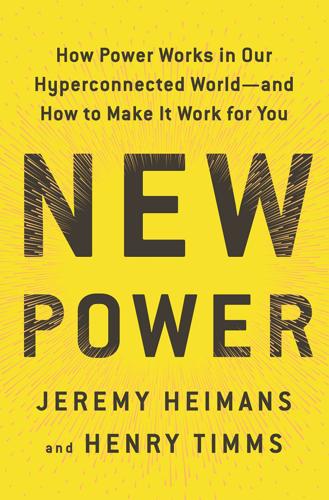
New Power: How Power Works in Our Hyperconnected World--And How to Make It Work for You
by
Jeremy Heimans
and
Henry Timms
Published 2 Apr 2018
“We’ve heard people say”: Peg Tyre, “Beyond School Supplies: How DonorsChoose Is Crowdsourcing Real Education Reform,” Fast Company, February 10, 2014. The site has seen over two million: DonorsChoose.org, July 2017. www.donorschoose.org. “We have vested school boards”: Tyre, “Beyond School Supplies.” “an opt-in society”: Kevin Roose, “Silicon Valley’s Secessionist Movement Is Growing,” New York Magazine, October 21, 2013. “Yelp for Drugs”: Peter Kafka, “Balaji Srinivasan, Who May Run the FDA for Trump, Hates the FDA,” Recode, January 14, 2017. In a leaked document: Alyson Shontell, “A Leaked Internal Uber Presentation Shows What the Company Really Values in Its Employees,” Business Insider, November 19, 2014.
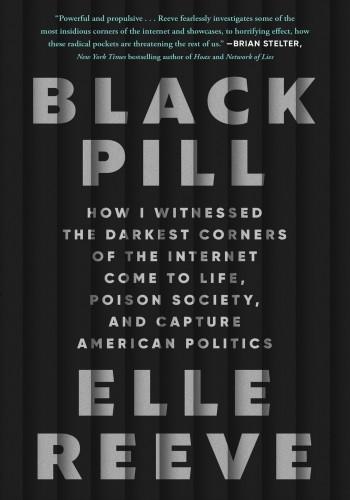
Black Pill: How I Witnessed the Darkest Corners of the Internet Come to Life, Poison Society, and Capture American Politics
by
Elle Reeve
Published 9 Jul 2024
v=VyHgtSy41VM Westphal testified: Alyshah Hasham, “Forensic Psychiatrist Continues His Testimony for the Defence at Minassian van Attack Trial,” Toronto Star, December 1, 2020. https://www.thestar.com/news/gta/forensic-psychiatrist-continues-his-testimony-for-the-defence-at-minassian-van-attack-trial/article_afae3c3b-8b1c-52d0-b5b5-24967a134ee0.html He told the New York Times: Kevin Roose, “ ‘Shut the Site Down,’ Says the Creator of 8chan, a Megaphone for Gunmen,” New York Times, August 4, 2019. https://www.nytimes.com/2019/08/04/technology/8chan-shooting-manifesto.html He told the QAnon Anonymous podcast: “Episode 63: Battle of 8chan feat Fredrick Brennan,” QAnon Anonymous podcast, October 2019.

Supremacy: AI, ChatGPT, and the Race That Will Change the World
by
Parmy Olson
In a launch video shown by Pichai, Bard botched a historical fact about the James Webb telescope, while Bing misstated some earnings numbers from retailer The Gap. The chatbots weren’t just hallucinating facts but suffering from some kind of mood disorder too. Not long after Microsoft’s announcement, New York Times writer Kevin Roose published a column about an unsettling two-hour conversation he’d held with Bing late one night, where Microsoft’s new search engine turned chatbot confessed its love for the writer and insisted that “you’re not happily married.” Roose wrote that the encounter had given him a “foreboding feeling that A.I. had crossed a threshold, and that the world would never be the same.”
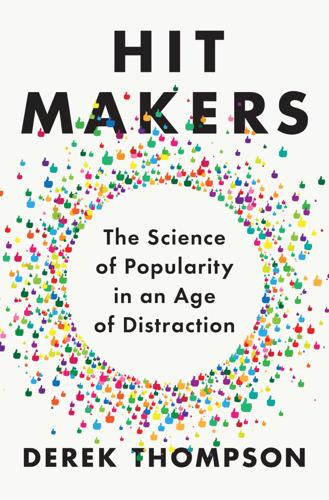
Hit Makers: The Science of Popularity in an Age of Distraction
by
Derek Thompson
Published 7 Feb 2017
Thanks to those whose conversations inspired this book, directly and implicitly: Drew Durbin, Lincoln Quirk, Michael Diamond, Jordan Weissmann, Robbie dePicciotto, Laura Martin, Maria Konnikova, Mark Harris, Spencer Kornhaber, Rececca Rosen, Alexis Madrigal, Bob Cohn, John Gould, Don Peck, James Bennet, Kevin Roose, Gabriel Rossman, Jesse Prinz, Duncan Watts, Anne Messitte, Andrew Golis, Aditya Sood, Nicholas Jackson, Seth Godin, the Diamonds, the Durbins, and Kira Thompson. Thanks to my grandmother, uncles, aunts, parents, and sister. NOTES Introduction “a love song is being sung to her”: Jan Swafford, Johannes Brahms: A Biography (New York: Vintage, 2012), 338.

The Industries of the Future
by
Alec Ross
Published 2 Feb 2016
Summers, “How Uber and the Sharing Economy Can Win Over Regulators,” Harvard Business Review, October 13, 2014, https://hbr.org/2014/10/how-uber-and-the-sharing-economy-can-win-over-regulators/; TX Zhuo, “Airbnb and Uber Are Just the Beginning: What’s Next for the Sharing Economy,” Entrepreneur, March 25, 2015, http://www.entrepreneur.com/article/244192. Founded in 2009 by Travis Kalanick: Cities, Uber, https://www.uber.com/cities. Uber’s first tagline was: Kevin Roose, “Uber Might Be More Valuable Than Facebook Someday. Here’s Why,” New York Magazine, December 6, 2013, http://nymag.com/daily/intelligencer/2013/12/uber-might-be-more-valuable-than-facebook.html. Uber is developing a ride-sharing: “The City of the Future: One Million Fewer Cars on the Road,” Uber Newsroom, October 3, 2014, http://blog.uber.com/city-future.
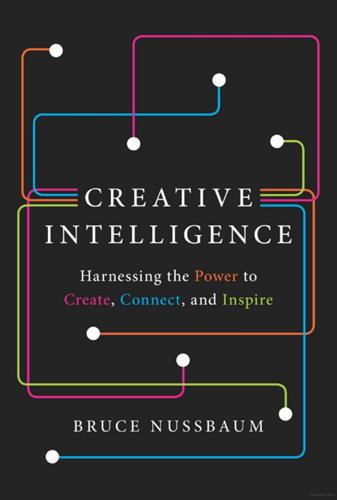
Creative Intelligence: Harnessing the Power to Create, Connect, and Inspire
by
Bruce Nussbaum
Published 5 Mar 2013
Although I waited too long and missed the chance to buy the painting of her mother, I do have another hanging on my wall that portrays the hills of her Laguna Pueblo where potters go to collect their clay. 90 Erving Goffman, a Canadian-born: Erving Goffman, Interaction Ritual: Essays on Face-to-Face Behavior (New York: Anchor Books, 1967); Erving Goffman, Frame Analysis: An Essay on the Organization of Experience (London: Harper and Row, 1974). 90 But today, thanks to outrage at the 1 percent: Kevin Roose, “A Blow to Pinstripe Aspirations,” New York Times, November 11, 2011, accessed September 11, 2012, http://dealbook.nytimes.com/2011/11/21/wall-st-layoffs-take-heavy-toll-on-younger-workers/. 91 Chemotherapy is a difficult therapy: I heard Irish Maliq speak at the GE HealthCare Conference Health by Design in 2009.
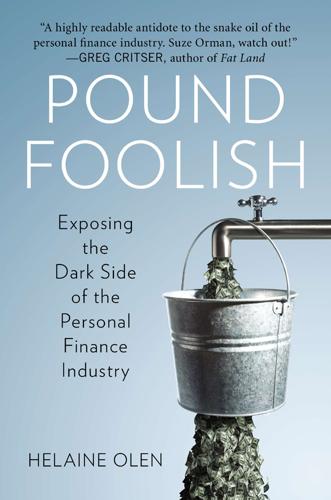
Pound Foolish: Exposing the Dark Side of the Personal Finance Industry
by
Helaine Olen
Published 27 Dec 2012
Ingrid Adade, the financial literacy officer for Leominster Credit Union: Brandon Butler, “Financial Institutions Reach Out To Growing Market Niche: Kids,” Worcester Business Journal, News, September 12, 2011, http://www.wbjournal.com/article/20110912/PRINTEDITION/309119980. Banzai, a Utah-based firm: http://www.cuinschool.com. 206 Money XLive, a live celebrity concert/financial literacy pep rally: http://www.financialeducatorscouncil.org/financialliteracysponsor.html. founder John Hope Bryant, in the words of the New York Times: Ben Protess and Kevin Roose, “Charities Struggle With Smaller Wall Street Donations,” DealBook, New York Times, August 30, 2011, http://dealbook.nytimes.com/2011/08/30/charities-struggle-with-smaller-wall-st-donations. Lew Mandell: author interview. 208 Charles Schwab: “2011 Teens & Money Survey Findings,” Charles Schwab, http://www.aboutschwab.com/images/press/teensmoneyfactsheet.pdf.

Frenemies: The Epic Disruption of the Ad Business
by
Ken Auletta
Published 4 Jun 2018
And when it was revealed that Facebook’s algorithms inadvertently enabled advertisers to target consumers with cringe-worthy keywords like “Jew hater,” and a Russian troll farm secretly purchased $100 million of ads to spread “fake news” to further polarize Americans during the 2016 presidential contest, founder Mark Zuckerberg acknowledged the limitations of his managers to control the algorithms. “I wish I could tell you we’re going to be able to catch all bad content in our system,” he announced in September 2017. “I wish I could tell you we’re going to be able to stop all interference, but that wouldn’t be realistic.” This prompted Kevin Roose of the New York Times to label this Facebook’s “Frankenstein moment,” likening this to Mary Shelley’s book, when the scientist—Dr. Frankenstein—realizes his robot creature “has gone rogue.” In October 2017, Mark Zuckerberg sheepishly admitted he should not have been so quick to defend the ability of Facebook’s machines to block “fake” news pushed by Russian hackers to subvert the Clinton presidential campaign.

A World Without Work: Technology, Automation, and How We Should Respond
by
Daniel Susskind
Published 14 Jan 2020
This is a reproduction of Figure 3.1.3 in Alvaredo, Chancel, Piketty, et al., World Inequality Report. 63. “Why Trade Unions Are Declining,” Economist, 29 September 2015. 64. John Kenneth Galbraith, American Capitalism: The Concept of Countervailing Power (Eastford, CT: Martino Fine Books, 2012). 65. Satya Nadella, “The Partnership of the Future,” Slate, 28 June 2016. 66. Kevin Roose, “The Hidden Automation Agenda of the Davos Elite,” New York Times, 25 January 2019. 67. Ryan Abbott and Bret Bogenschneider, “Should Robots Pay Taxes? Tax Policy in the Age of Automation,” Harvard Law & Policy Review 12 (2018). 68. “New Poll Reveals 8 in 10 Londoners Believe Capital’s Nurses Are Underpaid,” Royal College of Nursing, 6 September 2017, https://www.rcn.org.uk/; “The 50th Annual PDK Poll of the Public’s Attitudes Toward the Public Schools, Teaching: Respect but Dwindling Appeal,” PDK Poll, http://pdkpoll.org/ (accessed September 2018). 69.

Number Go Up: Inside Crypto's Wild Rise and Staggering Fall
by
Zeke Faux
Published 11 Sep 2023
GO TO NOTE REFERENCE IN TEXT A project finance lawyer: Alastair McCready, “From Industrial-Scale Scam Centers, Trafficking Victims Are Being Forced to Steal Billions,” Vice, July 13, 2022. GO TO NOTE REFERENCE IN TEXT A divorced mother of three: Brian Krebs, “Massive Losses Define Epidemic of ‘Pig Butchering,’ ” Krebs on Security (blog), July 21, 2022. GO TO NOTE REFERENCE IN TEXT A twenty-four-year-old social media producer: Kevin Roose, “Crypto Scammers’ New Target: Dating Apps,” New York Times, February 21, 2022. GO TO NOTE REFERENCE IN TEXT Once the mark was gone: The con man’s biggest challenge was getting rid of the victim after stealing their cash. Sometimes, they’d have a fake detective arrive and pretend to arrest the con man for stock manipulation, or one con man would pretend to shoot another, implicating the mark in a pretend murder.

You've Been Played: How Corporations, Governments, and Schools Use Games to Control Us All
by
Adrian Hon
Published 14 Sep 2022
“Working as a Call Center Supervisor,” Dialpad Help Center, Dialpad, accessed November 26, 2021, https://help.dialpad.com/hc/en-us/articles/115005100283-Working-as-a-Call-Center-Supervisor. 41. Ken Armstrong, Justin Elliott, and Ariana Tobin, “Meet the Customer Service Reps for Disney and Airbnb Who Have to Pay to Talk to You,” ProPublica, October 2, 2020, www.propublica.org/article/meet-the-customer-service-reps-for-disney-and-airbnb-who-have-to-pay-to-talk-to-you. 42. Kevin Roose, “A Machine May Not Take Your Job, but One Could Become Your Boss,” New York Times, June 23, 2019, www.nytimes.com/2019/06/23/technology/artificial-intelligence-ai-workplace.html; “Cogito,” Crunchbase, accessed November 26, 2021, www.crunchbase.com/organization/cogito-corp. 43. “US20190385632—Method and Apparatus for Speech Behavior Visualization and Gamification,” WIPO IP Portal, World Intellectual Property Organization, December 19, 2019, https://patentscope.wipo.int/search/en/detail.jsf;jsessionid=63E90861E21501F1698669D21C8D7666.wapp2nB?

Who’s Raising the Kids?: Big Tech, Big Business, and the Lives of Children
by
Susan Linn
Published 12 Sep 2022
Adam Mosseri, “Pausing ‘Instagram Kids’ and Building Parental Supervision Tools,” Instagram, September 27, 2021, about.instagram.com/blog/announcements/pausing-instagram-kids. 80. Mosseri, “Pausing ‘Instagram Kids.’” 81. Georgia Wells and Jeff Horwitz, “Facebook’s Effort to Attract Preteens Goes Beyond Instagram Kids, Documents Show,” Wall Street Journal, September 28, 2021, www.wsj.com/articles/facebook-instagram-kids-tweens-attract-11632849667. 82. Kevin Roose, “Facebook Is Weaker Than We Knew,” New York Times, October 4, 2021. CHAPTER 4: BROWSE! CLICK! BUY! REPEAT! “Amazon CEO Jeff Bezos Tip #37: ‘Reduce Friction,’” YouTube, March 10, 2013, www.youtube.com/watch?v=hUtQv8YWCGE. 1. Tim Kasser, The High Price of Materialism (Cambridge: MIT Press, 2002). 2.

Platform Revolution: How Networked Markets Are Transforming the Economy--And How to Make Them Work for You
by
Sangeet Paul Choudary
,
Marshall W. van Alstyne
and
Geoffrey G. Parker
Published 27 Mar 2016
Greenwood and Sunil Wattal, “Show Me the Way to Go Home: An Empirical Investigation of Ride Sharing and Motor Vehicle Homicide,” Platform Strategy Research Symposium, Boston, MA, July 9, 2015, http://ssrn.com/abstract=2557612. 7. John Coté, “SF Cracks Down on ‘MonkeyParking’ Mobile App,” SF Gate, June 23, 2014, http://blog.sfgate.com/cityinsider/2014/06/23/sf-cracks-down-on-street-parking-cash-apps/. 8. Kevin Roose, “Does Silicon Valley Have a Contract-Worker Problem?” New York, September 18, 2014, http://nymag.com/daily/intelligencer/2014/09/silicon-valleys-contract-worker-problem.html. 9. George J. Stigler, “The Theory of Economic Regulation,” Bell Journal of Economics and Management Science 2, no. 1 (Spring 1971): 3–21. 10.

Digital Gold: Bitcoin and the Inside Story of the Misfits and Millionaires Trying to Reinvent Money
by
Nathaniel Popper
Published 18 May 2015
But the story wouldn’t have come together without the time and cooperation of Fran, Hal, and Jason Finney; Dan Morehead; Patrick Murck; Erik Voorhees; Jesse Powell; Mark Karpeles; Mike Hearn; Naval Ravikant; Jed McCaleb; MiSoon Burzlaff; Nick Szabo; Reid Hoffman; Eric O’Brien; Federico Murrone; Charlie Lee; Amir Taaki; Jamileh Taaki; Alex Rampell; Emmauel Abiodun; Nicolas Cary; David Marcus; Jorge Restrelli; Bill Tanona; Pete Briger; Jamie Dimon; Max Neukirchen; Andy Dresner; Paul Walker; Marty Chavez; Alexander Kuzmin; Nicole Navas; Lyn Ulbricht; Josh Dratel; John Collins; Jennifer Shasky Calvery; Sebastian Serrano; Chris Larsen; Chris Dixon; Balaji Srinivasan; Marc Andreessen; Kim Milosevic; Brian Armstrong; Fred Ehrsam; John O’Brien; Belle Casares; Patrick Strateman; Yifu Guo; Marcie Braden; Alex Waters; Brian Klein; Nejc Kodric; Paul Chou; Jeff Garzik; Adam Back; Laszlo Hanecz; Leon Li; Gil Lauria; Monica Long; Michael Keferl; Daniel Kelman; Jack Smith; Tim Swanson; Rui Ma; Jack Wang; Ling Kang; Huang Xiaoyu; Kathleen Lee; Ayaka Ver; Alex Likhtenstein; Jeremy Allaire; Matt Cohler; Larry Lenihan; Fred Wilson; Michael Goldstein; Phil Zimmerman; Yin Shih; Perry Metzger; Tony Gallipi; Bruce Wagner; and Justin Myers. I also was lucky to be writing about a topic that had already been covered by smart journalists, academics, and filmmakers like Nicholas Mross, Joshua Davis, Kevin Roose, Eileen Ormsby, Izabella Kaminska, Felix Salmon, Andy Greenberg, Sergio Demian Lerner, Sarah Meikeljohn, Nicolas Christin, Susan Athey, Adrianne Jeffries, and Andrea Chang. This book immensely benefited from my first readers, some of whom are also my best friends: Teddy Wayne, Peter Eavis, Lev Moscow, Mark Suppes, David Segal, Benny Gorlick, Alex Morcos, and Ben Davenport.
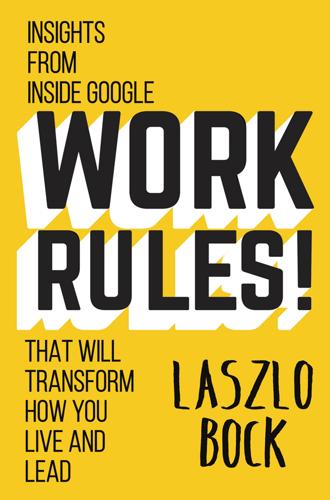
Work Rules!: Insights From Inside Google That Will Transform How You Live and Lead
by
Laszlo Bock
Published 31 Mar 2015
“Milestones in Mayer’s Tenure as Yahoo’s Chief,” New York Times, January 16, 2014, http://www.nytimes.com/interactive/2014/01/16/technology/marissa-mayer-yahoo-timeline.html?_r=0#/#time303_8405. 67. Brian Stelter, “He Has Millions and a New Job at Yahoo. Soon, He’ll Be 18,” New York Times, March 25, 2013, http://www.nytimes.com/2013/03/26/business/media/nick-daloisio-17-sells-summly-app-to-yahoo.html?hp&_r=0. Kevin Roose, “Yahoo’s Summly Acquisition Is About PR and Hiring, Not a 17-Year-Old’s App,” New York, March 26, 2013, http://nymag.com/daily/intelligencer/2013/03/yahoos-summly-acquisition-is-about-image.html. 68. “Yahoo Acquires Xobni App,” Zacks Equity Research, July 5, 2013, http://finance.yahoo.com/news/yahoo-acquires-xobni-app-154002114.html. 69.
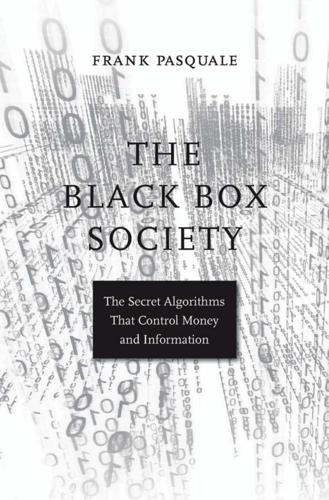
The Black Box Society: The Secret Algorithms That Control Money and Information
by
Frank Pasquale
Published 17 Nov 2014
Todd Woody, “You’d Never Know He’s a Sun King,” New York Times, May 9, 2010, BU1; “Vice Fund Manager Finds Plenty of Virtue in Sin Stocks,” Middletown Press, August 24, 2010, http://www.middletownpress.com /articles /2010/08/24 /business/doc4c732f5c49a1d717896087.txt. 81. Mark Kinver, “China’s ‘Rapid Renewables Surge,’ ” BBC News, August 1, 2008, http://news.bbc.co.uk /2/hi /science/nature/7535839.stm. NOTES TO PAGES 212–214 303 82. Moreover, overwork has been documented among many in the industry. Kevin Roose, Young Money: Inside the Hidden World of Wall Street’s Post- Crash Recruits (New York: Grand Central Publishing, 2014); Karen Ho, Liquidated: An Ethnography of Wall Street (Durham, NC: Duke University Press, 2009). 83. See, e.g., Regina F. Burch, “Financial Regulatory Reform PostFinancial Crisis: Unintended Consequences for Small Businesses,” Penn State Law Review 115 (2010–2011): 443.
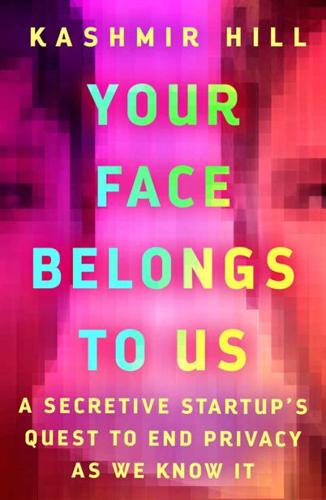
Your Face Belongs to Us: A Secretive Startup's Quest to End Privacy as We Know It
by
Kashmir Hill
Published 19 Sep 2023
I’m grateful to my colleagues at The New York Times, particularly Jennifer Valentino-DeVries, Aaron Krolik, Gabriel Dance, Susan Beachy, and Kitty Bennett, the reporters and researchers with whom I worked on the story that started it all. David Enrich and Nick Summers both wisely suggested, after one too many Clearview AI pitches from me, that I should probably write a book. Bill Wasik, Willy Staley, and Vauhini Vara at the magazine helped imagine the longer-form version of the story. Thank you to Kevin Roose, Sheera Frenkel, Cecilia Kang, and Mike Isaac for your advice on the book writing process, and to Rachel Dry, Ellen Pollock, and Carolyn Ryan for giving me the time to write it. The Times is an incredible place to be a journalist, and all the more rewarding when kind notes arrive from the masthead and from the publisher, A.G.

Stolen Focus: Why You Can't Pay Attention--And How to Think Deeply Again
by
Johann Hari
Published 25 Jan 2022
GO TO NOTE REFERENCE IN TEXT Nir responds by pointing to a recent study by the coder Mark Ledwich: M. Ledwich and A. Zaitsev, “Algorithmic Extremism: Examining YouTube’s Rabbit Hole of Radicalization,” Cornell University (2019), arXiv:1912:11211. See also A. Kantrowitz, “Does YouTube Radicalize?” OneZero, January 7, 2020, https://onezero.medium.com/does-youtube-radicalize-a-debate-between-kevin-roose-and-mark-ledwich-1b99651c7bb; and W. Feuer, “Critics Slam Study Claiming YouTube’s Algorithm Doesn’t Lead to Radicalization,” CNBC, December 31, 2019. GO TO NOTE REFERENCE IN TEXT Tristan, in response, directs people toward the Princeton academic Professor Arvind Narayanan: A.
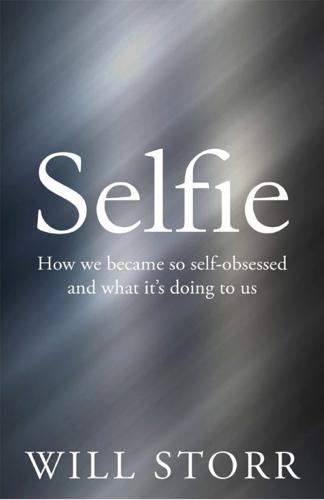
Selfie: How We Became So Self-Obsessed and What It's Doing to Us
by
Will Storr
Published 14 Jun 2017
One, the Negev, had been reported: ‘SRO tenants’ tales tell scary story’, Jessica Kwong, San Francisco Examiner, 21 November 2014. Meanwhile, Chez JJ, in the Castro: ‘An SF Hacker Hostel Faces the Real World and Loses’, Davey Alba, Wired, 22 August 2015. The Startup Castle, a Tudor-style mansion: ‘Silicon Valley’s “Startup Castle” is looking for roommates, and the requirements are completely bonkers’, Kevin Roose, Fusion.net, 13 May 2015. They cite surveys that suggest . . . etc.: Generation Me, Jean Twenge (Atria, 2006), p. 99. One 2006 poll of British children placed . . . Over in the US: The Narcissism Epidemic, Jean M. Twenge and W. Keith Campbell (Free Press, 2010), pp. 93, 94. Twenge points to further data that suggest individualism is rising: ‘Increases in Individualistic Words and Phrases in American Books, 1960–2008’, Jean M.

Super Pumped: The Battle for Uber
by
Mike Isaac
Published 2 Sep 2019
Everyone has a motivation to speak with a reporter, but many of my best sources felt they were doing the right thing by coming forward and telling their story in hopes it would help people to better understand the story of Uber. I want to express my thanks to all of you here: I truly could not have done it without you. Many thanks as well go to the writers and friends who counseled and supported me through the process. Kevin Roose, B. J. Novak, Nick Bilton, and Anna Wiener gave brilliant feedback, while Tristan Lewis, Emily Silverman, and Hana Metzger provided much needed respite from my writing desk. And finally, to my family—Michael, Lorraine, Joe, and especially Sarah Emerson and Bruna—all of whom have managed to deal with my craziness, long days, and even longer nights of reporting and writing this book.

The Contrarian: Peter Thiel and Silicon Valley's Pursuit of Power
by
Max Chafkin
Published 14 Sep 2021
was the CNBC headline: Jay Yarrow, “Peter Thiel Perfectly Summed Up Donald Trump in a Few Sentences,” CNBC, November 9, 2016, https://www.cnbc.com/2016/11/09/peter-thiel-perfectly-summed-up-donald-trump-in-one-paragraph.html; see also: Dara Lind, “Peter Thiel’s Monstrously Naïve Case for Donald Trump,” Vox, October 31, 2016, https://www.vox.com/policy-and-politics/2016/10/31/13477236/trump-seriously-literally-thiel. popular than anything else: This was a controversial statement in 2016, but it has since been well documented, especially by Kevin Roose at The New York Times. See especially: “What If Facebook Is the Real ‘Silent Majority,’ ” August 27, 2020, https://www.nytimes.com/2020/08/27/technology/what-if-facebook-is-the-real-silent-majority.html. raise $80 million: Issie Lapowsky, “What Did Cambridge Analytica Really Do for Trump’s Campaign,” Wired, October, 26, 2017, https://www.wired.com/story/what-did-cambridge-analytica-really-do-for-trumps-campaign/.
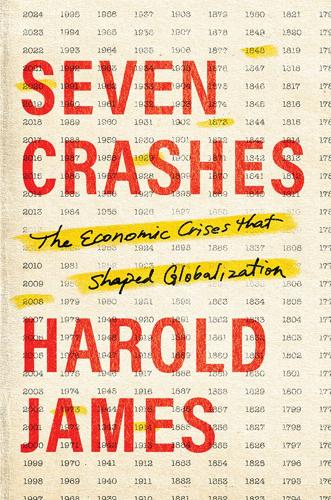
Seven Crashes: The Economic Crises That Shaped Globalization
by
Harold James
Published 15 Jan 2023
Federal Open Market Committee, “Meeting, March 15, 2020 (Unscheduled): Press Conference Transcript,” Federal Open Market Committee Meeting Minutes, Transcripts, and Other Documents, March 15, 2020, https://fraser.stlouisfed.org/title/federal-open-market-committee-meeting-minutes-transcripts-documents-677/meeting-march-15–2020-unscheduled-587319/content/pdf/FOMCpresconf20200315_final. 9. Kevin Roose and Matthew Rosenberg, “Touting Virus Cure, ‘Simple Country Doctor’ Becomes a Right-Wing Star,” New York Times, April 2, 2020, https://www.nytimes.com/2020/04/02/technology/doctor-zelenko-coronavirus-drugs.html. 10. Elisa Braun and Rym Momtaz, “Macron Meets with Controversial Chloroquine Doctor Touted by Trump,” Politico, April 9, 2020, https://www.politico.com/news/2020/04/09/macron-meets-with-controversial-chloroquine-doctor-touted-by-trump-177879. 11.

Good Economics for Hard Times: Better Answers to Our Biggest Problems
by
Abhijit V. Banerjee
and
Esther Duflo
Published 12 Nov 2019
“San Francisco, CA Rental Market Trends,” accessed June 4, 2019, https://www.rentcafe.com/average-rent-market-trends/us/ca/san-francisco/. 79 “New Money Driving Out Working-Class San Franciscans,” Los Angeles Times, June 21, 1999, accessed June 4, 2019, https://www.latimes.com/archives/la-xpm-1999-jun-21-mn-48707-story.html. 80 Glaeser, Triumph of the City. 81 Atif Mian and Amir Sufi have developed these arguments in their book House of Debt: How They (and You) Caused the Great Recession, and How We Can Prevent It from Happening Again (Chicago: University of Chicago Press, 2014), and many articles, including Atif Mian, Kamalesh Rao, and Amir Sufi, “Household Balance Sheets, Consumption, and the Economic Slump,” Quarterly Journal of Economics 128, no. 4 (2013): 1687–1726. 82 Matthew Desmond, Evicted: Poverty and Profit in the American City (New York: Crown, 2016). 83 Mark Aguiar, Mark Bils, Kerwin Kofi Charles, and Erik Hurst, “Leisure Luxuries and the Labor Supply of Young Men,” NBER Working Paper 23552, 2017. 84 Kevin Roose, “Silicon Valley Is Over, Says Silicon Valley,” New York Times, March 4, 2018. 85 Andrew Ross Sorkin, “From Bezos to Walton, Big Investors Back Fund for ‘Flyover’ Start-Ups,” New York Times, December 4, 2017. 86 Glenn Ellison and Edward Glaeser, “Geographic Concentration in U.S. Manufacturing Industries: A Dartboard Approach,” Journal of Political Economy 105, no. 5 (1997): 889–927. 87 Bryan, Chowdhury, and Mobarak, “Underinvestment in a Profitable Technology.” 88 Tabellini, “Gifts of the Immigrants, Woes of the Natives.”

Evil Geniuses: The Unmaking of America: A Recent History
by
Kurt Andersen
Published 14 Sep 2020
A few years ago the founder and operator of the annual weeklong convocation of masters of the universe known as the World Economic Forum in Davos, Switzerland, started using “the Fourth Industrial Revolution” to describe what’s happening. It stuck, and in 2019 at Davos it was a main topic for the three thousand CEOs and bankers (and government officials and consultants and academics and journalists), a third of them American. The technology reporter Kevin Roose wrote a bracingly honest account in The New York Times called “The Hidden Automation Agenda of the Davos Elite.” In the public panel discussions and on-the-record interviews, he wrote, executives wring their hands over the negative consequences that artificial intelligence and automation could have for workers….But in private settings…these executives tell a different story: They are racing to automate their own work forces to stay ahead of the competition, with little regard for the impact on workers….They crave the fat profit margins automation can deliver, and they see A.I. as a golden ticket to savings, perhaps by letting them whittle departments with thousands of workers down to just a few dozen.

Blood in the Machine: The Origins of the Rebellion Against Big Tech
by
Brian Merchant
Published 25 Sep 2023
They saw that automation is not a faceless phenomenon that we must submit to. And they were right: Automation is, quite often and quite simply, a matter of the executive classes locating new ways to enrich themselves, not unlike the factory bosses of the Luddite days. Here’s a telling example: In 2019, the New York Times’ Kevin Roose filed a report from Davos detailing how the business leaders and tech CEOs at that year’s World Economic Forum (WEF) were very eager to implement automation. “They’ll never admit it in public,” Roose wrote, “but many of your bosses want machines to replace you as soon as possible.” In public, the elites preferred to discuss the abstract need to prepare for “the fourth industrial revolution” or “the second machine age.”
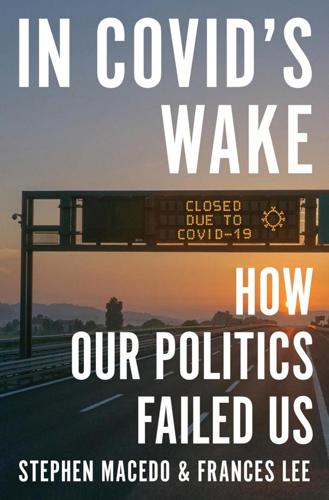
In Covid's Wake: How Our Politics Failed Us
by
Stephen Macedo
and
Frances Lee
Published 10 Mar 2025
Space does not permit fuller discussion but we agree with concerns raised in Justice Samuel Alito’s dissent, that the government’s actions w ere uncomfortably close to “a covert regime of censorship,” 30. 12. See our discussion in chapter 9. 13. Robert Tucker Omberg and Alex Tabarrok, “Is It Possible to Prepare for a Pandemic?,” Oxford Review of Economic Policy 38 (4, 2022): 851–75, 873. 14. Kevin Roose, “A.I. Poses ‘Risk of Extinction,’ Industry Leaders Warn,” New York Times, May 30, 2023, https://www.nytimes.com/2023/05/30/technology/ai-threat-warning.html. 15. William James, The Varieties of Religious Experience: A Study in Human Nature (New York: The Modern Library, 1902), Lectures 14 and 15: “The Value of Saintliness,” https://www.religion -online.org/book-chapter/lectures-14-and-15-the-value-of-saintliness/. 16.

Uncontrolled Spread: Why COVID-19 Crushed Us and How We Can Defeat the Next Pandemic
by
Scott Gottlieb
Published 20 Sep 2021
DeVito, Michael Liu, and Jeffrey K Aronson, “COVID-19 Clinical Trials Report Card: Chloroquine and Hydroxychloroquine,” Oxford COVID-19 Centre for Evidence-Based Medicine, May 11, 2020. 28.US Food and Drug Administration, “Electronic Reading Room: COVID,” May 11, 2021, https://www.fda.gov/regulatory-information/freedom-information/electronic-reading-room; and Steve Usdin, “FDA Documents Shed Light on Chaotic COVID Decision-Making during Trump Administration,” Biocentury, May 14, 2021. 29.Tina Nguyen, “How a Chance Twitter Thread Launched Trump’s Favorite Coronavirus Drug,” Politico, April 7, 2020. 30.Kevin Roose and Matthew Rosenberg, “Touting Virus Cure, ‘Simple Country Doctor’ Becomes a Right-Wing Star,” New York Times, April 2; and Katherine Eban, “‘I’ll Send You the Contact’: Documents Expose FDA Commissioner’s Personal Interventions on Behalf of Trump’s Favorite Chloroquine Doctor,” Vanity Fair, May 27, 2020. 31.Wright, “The Plague Year.” 32.Katherine Eban, “’A Tsunami of Randoms’: How Trump’s COVID Chaos Drowned the FDA in Junk Science,” Vanity Fair, January 19, 2021. 33.Christopher Rowland, Debbie Cenziper, and Lisa Rein, “White House Sidestepped FDA to Distribute Hydroxychloroquine to Pharmacies, Documents Show.

Likewar: The Weaponization of Social Media
by
Peter Warren Singer
and
Emerson T. Brooking
Published 15 Mar 2018
Senator,” Reuters, September 7, 2017, https://www.reuters.com/article/us-twitter-propoganda/twitter-to-brief-congress-on-possible-russia-backed-ads-u-s-senator-idUSKCN1BI22R. 241 Zuckerberg apologized: Sam Levin, “Mark Zuckerberg: I Regret Ridiculing Fears over Facebook’s Effect on Election,” The Guardian, September 27, 2017, https://www.theguardian.com/technology/2017/sep/27/mark-zuckerberg-facebook-2016-election-fake-news. 241 “I don’t want anyone”: Kurt Wager, “Read Mark Zuckerberg’s Full Speech on How Facebook Is Fighting Back Against Russia’s Election Interference,” Recode, September 21, 2017, https://www.recode.net/2017/9/21/16347036/mark-zuckerberg-facebook-russia-election-interference-full-speech. 241 “the biggest risk we face”: Steve Huffman, “In Response to Recent Reports About the Integrity of Reddit, I’d Like to Share Our Thinking,” Reddit, March 5, 2018, https://www.reddit.com/r/announcements/comments/827zqc/in_response_to_recent_reports_about_the_integrity/. 241 $57 million: Melissa Eddy and Mark Scott, “Delete Hate Speech or Pay Up, Germany Tells Social Media Companies,” New York Times, https://www.nytimes.com/2017/06/30/business/germany-facebook-google-twitter.html. 242 Federal Election Commission disclosure rules: Heather Timmons, “The US Want to Regulate Political Advertising on Social Media,” World Economic Forum, October 19, 2017, https://www.weforum.org/agenda/2017/10/the-us-want-to-regulate-political-advertising-on-social-media. 242 same exemptions as skywriting: Donie O’Sullivan, “Facebook Sought Exception from Political Ad Disclaimer Rules in 2011,” CNNMoney, September 27, 2017, CNN Money, http://money.cnn.com/2017/09/27/technology/business/facebook-political-ad-rules/index.html. 242 As Zuckerberg confessed: Kevin Roose and Sheera Frenkel, “Mark Zuckerberg’s Reckoning: ‘This Is a Major Trust Issue,’” New York Times, March 21, 2018, https://www.nytimes.com/2018/03/21/technology/mark-zuckerberg-q-and-a.html?mtrref=www.theringer.com. 242 “violence to resist occupation”: Angwin and Grassegger, “Facebook’s Secret Censorship Rules.” 242 A Chinese billionaire: Alexandra Stevenson, “Facebook Blocks Chinese Billionaire Who Tells Tales of Corruption,” New York Times, October 1, 2017, https://www.nytimes.com/2017/10/01/business/facebook-china-guo-wengui.html. 243 Rohingya Muslim minority: Betsy Woodruff, “Exclusive: Facebook Silences Rohingya Reports of Ethnic Cleansing,” The Daily Beast, September 18, 2017, https://www.thedailybeast.com/exclusive-rohingya-activists-say-facebook-silences-them. 243 every bot made Twitter: Selina Wang, “Twitter Is Crawling with Bots and Lacks Incentive to Expel Them,” Bloomberg, October 13, 2017, https://www.bloomberg.com/news/articles/2017-10-13/twitter-is-crawling-with-bots-and-lacks-incentive-to-expel-them?

The Singularity Is Nearer: When We Merge with AI
by
Ray Kurzweil
Published 25 Jun 2024
Filisko, “Paralegals and Legal Assistants Are Taking on Expanded Duties,” ABA Journal, November 1, 2014, http://www.abajournal.com/magazine/article/techno_change_o_paralegal_legal_assistant_duties_expand; Jean O’Grady, “Analytics, AI and Insights: 5 Innovations That Redefined Legal Research Since 2010,” Above the Law, January 2, 2020, https://abovethelaw.com/2020/01/analytics-ai-and-insights-5-innovations-that-redefined-legal-research-since-2010. BACK TO NOTE REFERENCE 84 Kevin Roose, “A.I.-Generated Art Is Already Transforming Creative Work,” New York Times, October 21, 2022, https://www.nytimes.com/2022/10/21/technology/ai-generated-art-jobs-dall-e-2.html. BACK TO NOTE REFERENCE 85 For quick, accessible explainers on the differences between capital and labor, see BBC, “Methods of Production: Labour and Capital,” BBC Bitesize, accessed January 30, 2023, https://www.bbc.co.uk/bitesize/guides/zth78mn/revision/5; Sal Khan, “What Is Capital?
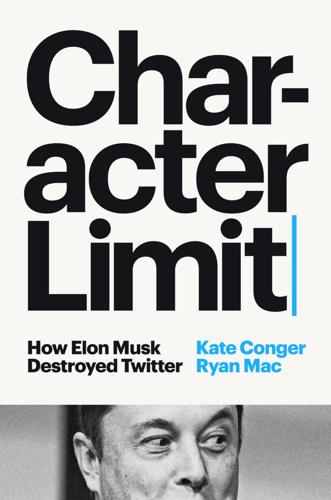
Character Limit: How Elon Musk Destroyed Twitter
by
Kate Conger
and
Ryan Mac
Published 17 Sep 2024
Cade Metz set an example for elegant, character-driven storytelling and selfless collaboration, and provided invaluable feedback on our reporting and early drafts. Kashmir Hill and Tripp Mickle also generously dedicated their time to reading our manuscript and honing our story, while Sheera Frenkel, Cecilia Kang, and Kevin Roose held our hands as we navigated the world of book publishing. We’re also particularly grateful for Dai Wakabayashi’s mentorship, steady spirit, and searing comebacks. Reporting on Tesla, SpaceX, Twitter, and the wider world of Musk can be a trying endeavor. No single journalist or publication can handle it all.

Power and Progress: Our Thousand-Year Struggle Over Technology and Prosperity
by
Daron Acemoglu
and
Simon Johnson
Published 15 May 2023
RPA bots are now deployed in banking, lending decisions, e-commerce, and various software-support functions. Prominent examples include automated voice-recognition systems and chatbots that learn from remote IT-support practices. Many experts believe this kind of automation will spread to myriad tasks currently performed by white-collar workers. New York Times journalist Kevin Roose summarizes RPAs’ potential as follows: “Recent advances in A.I. and machine learning have created algorithms capable of outperforming doctors, lawyers and bankers at certain parts of their jobs. And as bots learn to do higher-value tasks, they are climbing the corporate ladder.” Supposedly, we will all be the beneficiaries of these spectacular new capabilities.

The Age of Surveillance Capitalism
by
Shoshana Zuboff
Published 15 Jan 2019
Madhumita Murgia and David Bond, “Google Apologises to Advertisers for Extremist Content on YouTube,” Financial Times, March 20, 2017; Sam Levin, “Mark Zuckerberg: I Regret Ridiculing Fears Over Facebook’s Effect on Election,” Guardian, September 27, 2017, http://www.theguardian.com/technology/2017/sep/27/mark-zuckerberg-facebook-2016-election-fake-news; Robert Booth and Alex Hern, “Facebook Admits Industry Could Do More to Combat Online Extremism,” Guardian, September 20, 2017, http://www.theguardian.com/technology/2017/sep/20/facebook-admits-industry-could-do-more-to-combat-online-extremism; Scott Shane and Mike Isaac, “Facebook to Turn Over Russian-Linked Ads to Congress,” New York Times, September 21, 2017, https://www.nytimes.com/2017/09/21/technology/face book-russian-ads.html; David Cohen, “Mark Zuckerberg Seeks Forgiveness in Yom Kippur Facebook Post,” Adweek, October 2, 2017, http://www.adweek.com/digital/mark-zuckerberg-yom-kippur-facebook-post; “Exclusive Interview with Facebook’s Sheryl Sandberg,” Axios, October 12, 2017, https://www.axios.com/exclusive-interview-facebook-sheryl-sandberg-2495538841.html; Kevin Roose, “Facebook’s Frankenstein Moment,” New York Times, September 21, 2017, https://www.nytimes.com/2017/09/21/technology/face book-frankenstein-sandberg-ads.html. 45. David Cohen, “Mark Zuckerberg Seeks Forgiveness in Yom Kippur Facebook Post.” 46. Roose, “Facebook’s Frankenstein Moment.” 47. Booth and Hern, “Facebook Admits Industry Could Do More to Combat Online Extremism.” 48.

God's Bankers: A History of Money and Power at the Vatican
by
Gerald Posner
Published 3 Feb 2015
Chapter 35: Chasing the White List 1 Wang Yunjia, “Old Obstacles, New Crisis Hits Italy’s Lagging eEconomy,” Xinhua, March 11, 2009. 2 Diego Coletto, “Effects of Economic Crisis on Italian Economy,” European Industrial Relations Observatory, University of Milan, January 6, 2010; see also Roberto Di Quirico, “Italy and the Global Economic Crisis,” Bulletin of Italian Politics 2, no. 2 (2010): 3–19. 3 “Vatican Runs Deficit Amid Global Economic Crisis,” Business, Huffington Post, July 4, 2009; Kevin Roose, “The Vatican’s Financial Empire, in Charts,” News & Politics, New York, March 12, 2013. The money raised through Peter’s Pence dropped every year through 2010. See Nuzzi, Ratzinger Was Afraid, 81. 4 Ibid. 5 Benedict quoted in Lorenzo Totaro, “Vatican Says Islamic Finance May Help Western Banks in Crisis,” Bloomberg, March 4, 2009. 6 Ibid. 7 “Vatican Bank Safe from Crisis, Bank President Says,” EWTN Global Catholic Network, October 15, 2008.